This’ll be brief.
Thanks for letting us visit you, John & Ann (and Tojo). It was great to see you again and to catch up.

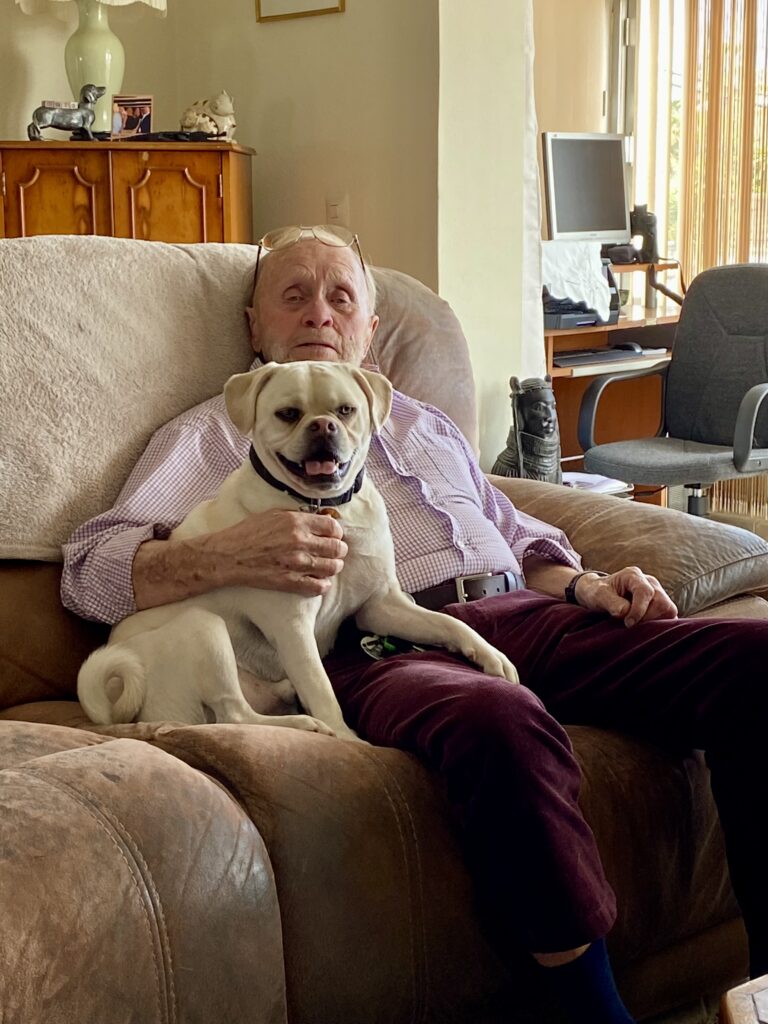
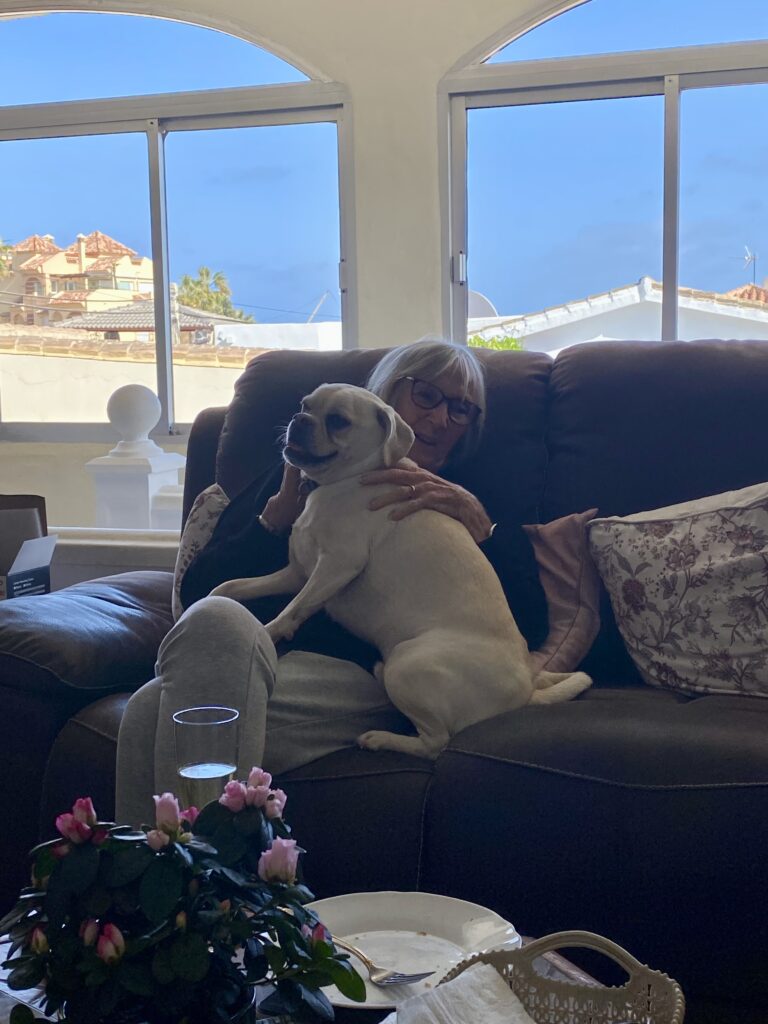
We look forward to seeing you again and to staying over. All the best!!
This’ll be brief.
Thanks for letting us visit you, John & Ann (and Tojo). It was great to see you again and to catch up.



We look forward to seeing you again and to staying over. All the best!!
How we stumbled on La Garrofa, I do not know. On our journey south we had arranged to visit some old family friends (John & Ann) who have lived in Fuengirola (Mijas) for many years (We last saw them some time in the 1980’s) and we were looking to overnight somewhere that would be within easy reach of Mijas. We found La Garrofa.
The write ups on La Garrofa are not all that good but, ignore them. It is one of the oldest campsites in Spain, having opened in 1957 and so, yes, some aspects of the place are a little dated and; it is small and; it is in the middle of nowhere but; it has all the amenities you could want (including a bar and restaurant – and the food is not bad) and it has it’s own pebble beach. We were parked so close to the water’s edge that there was no escaping the sound of the waves. It was perfect for an overnight stay.
There’s not much else to say except that the owner and the bar/restaurant staff were very friendly towards us. I’ll let the pictures do the talking…
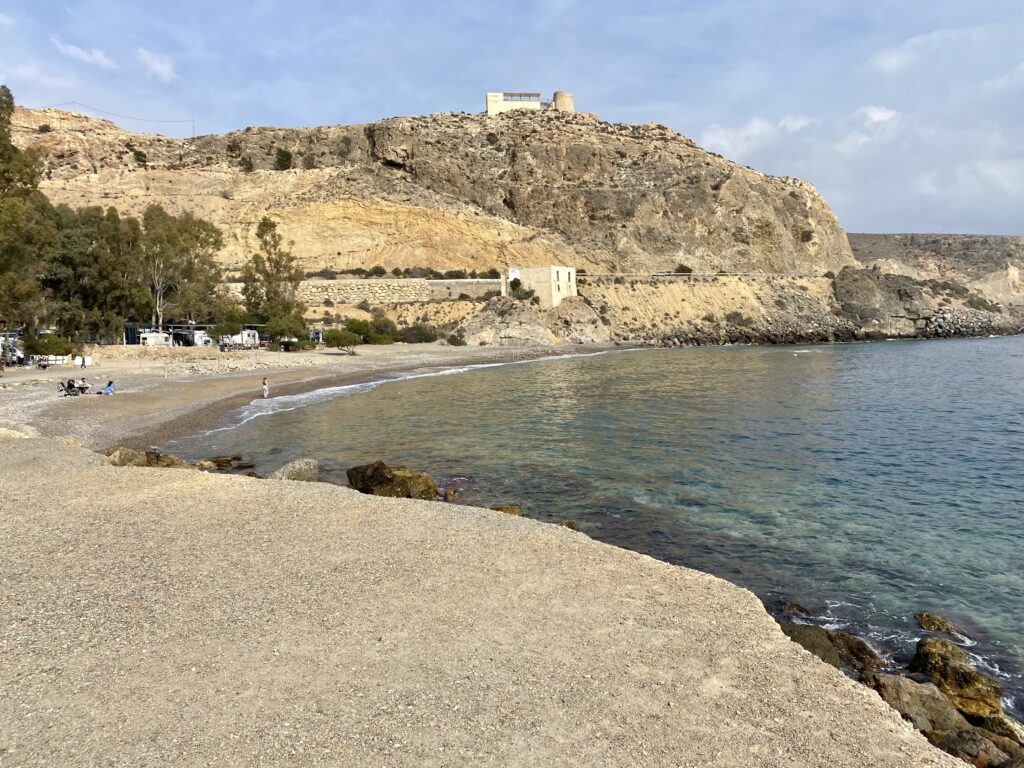
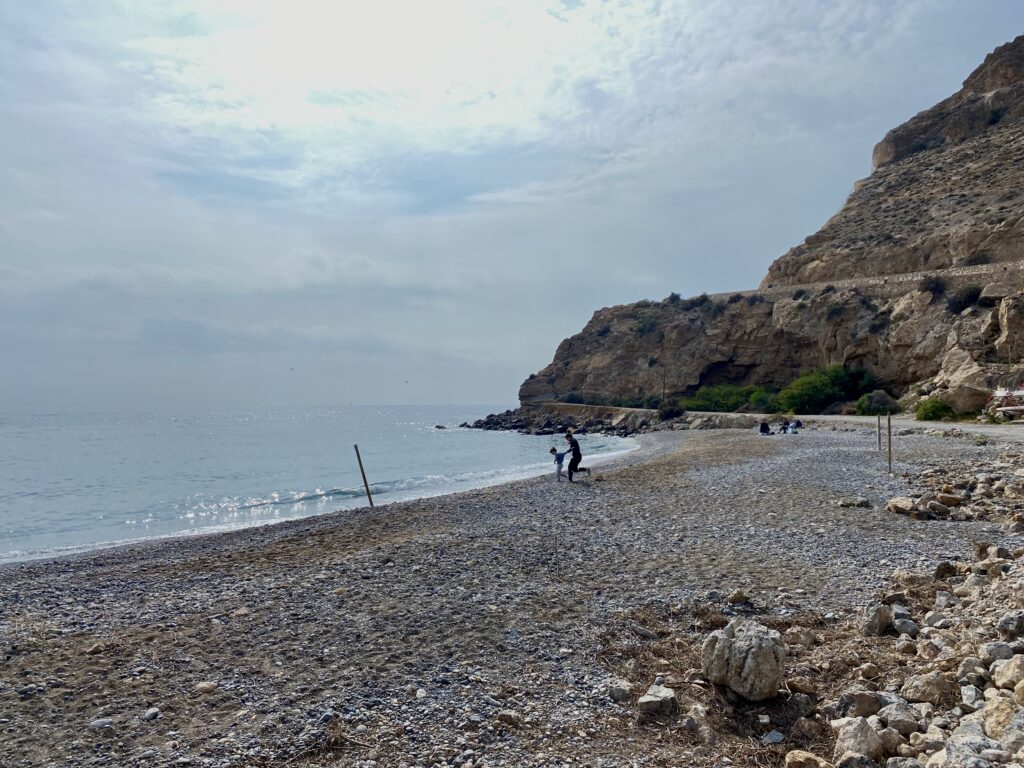

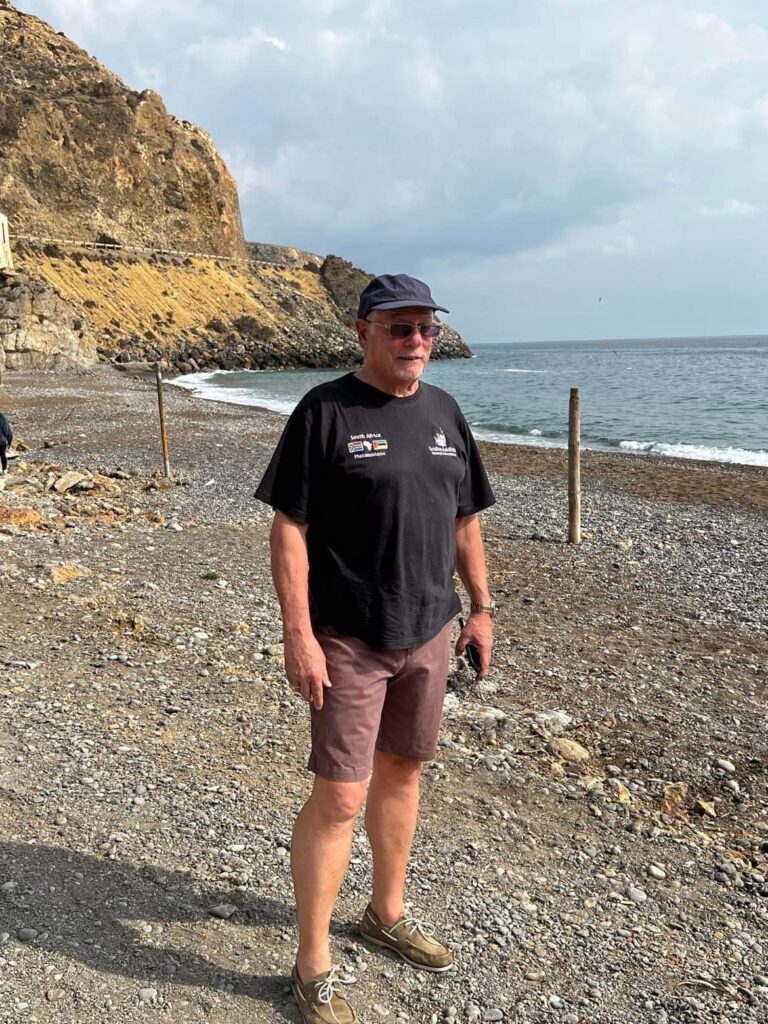
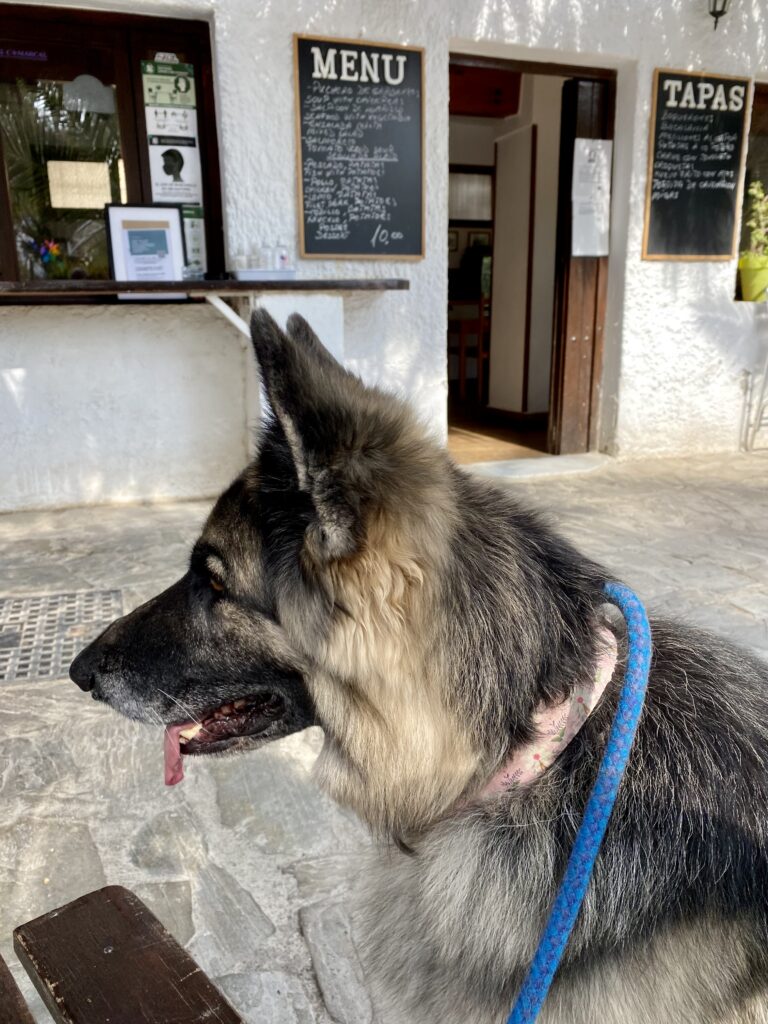
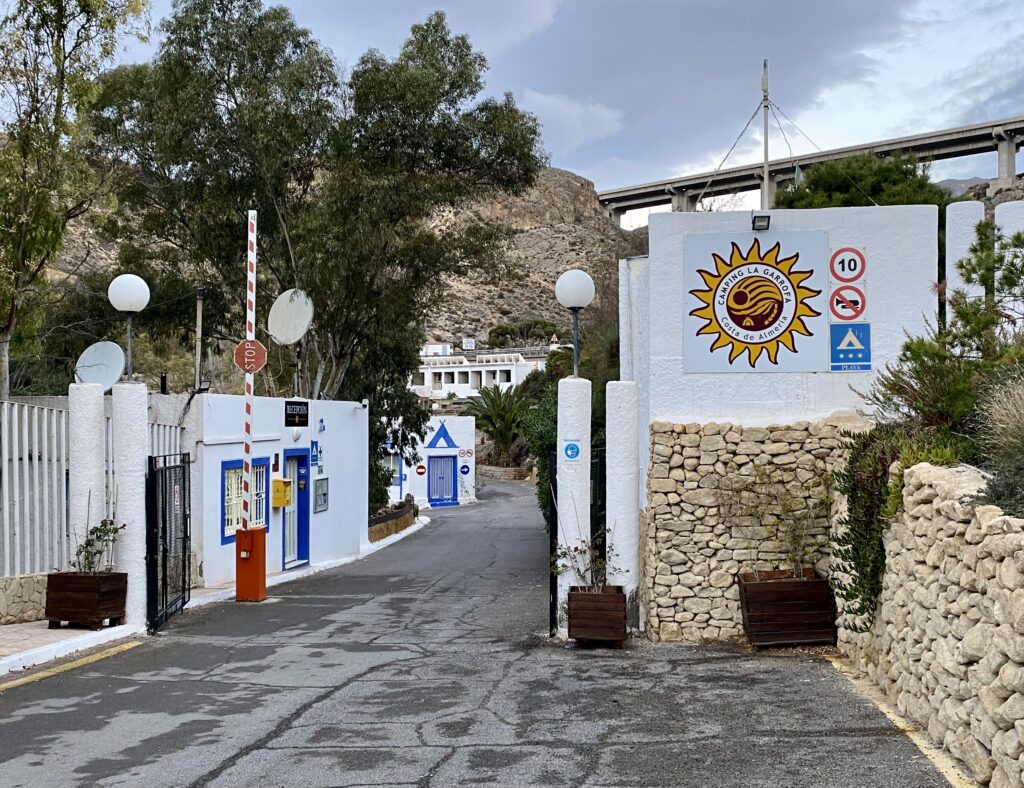
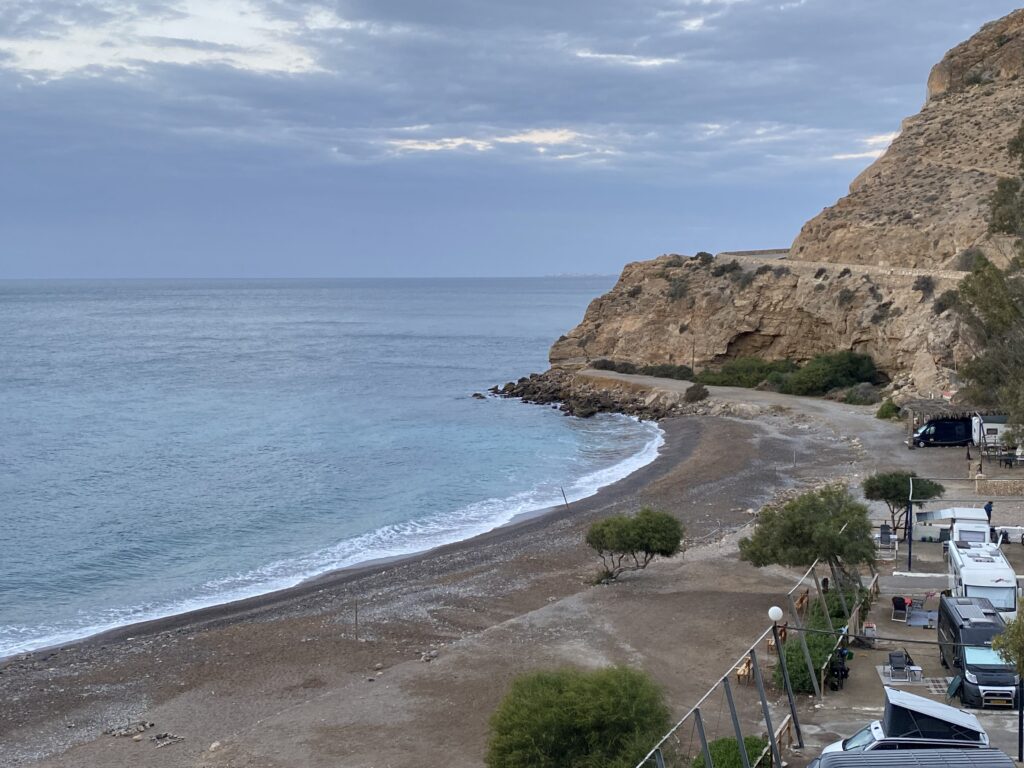
Not bad at all!
From Peniscola we continued further south pausing only at Camping Mar Menor on the Mar Menor Lagoon in Murcia.
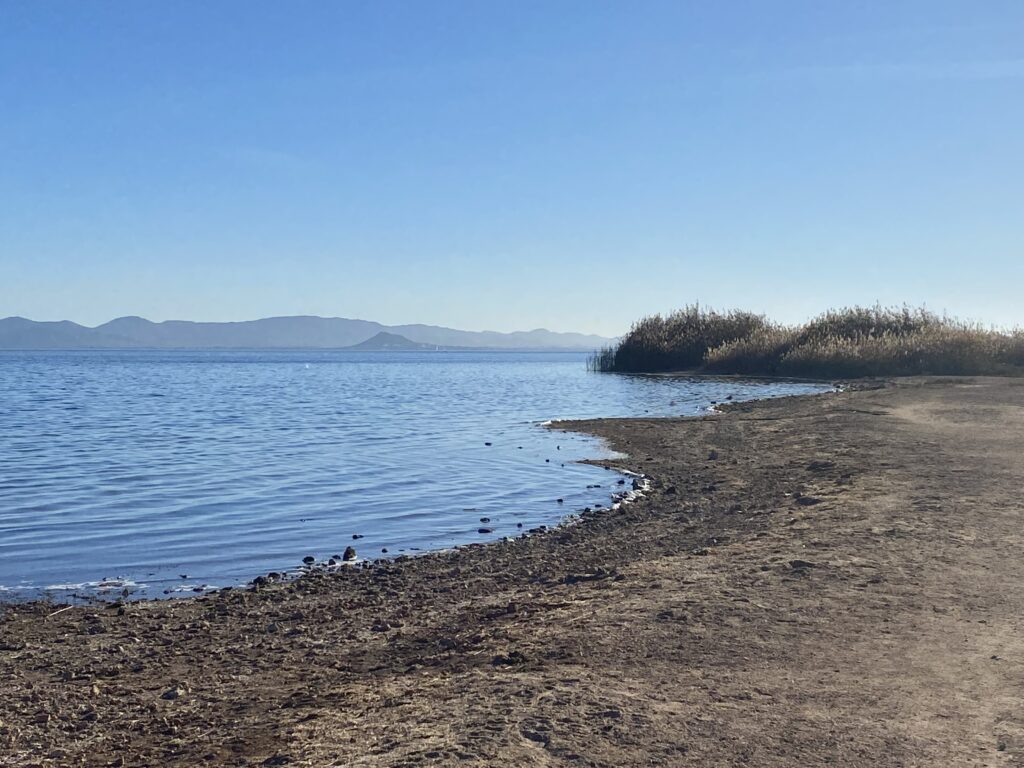
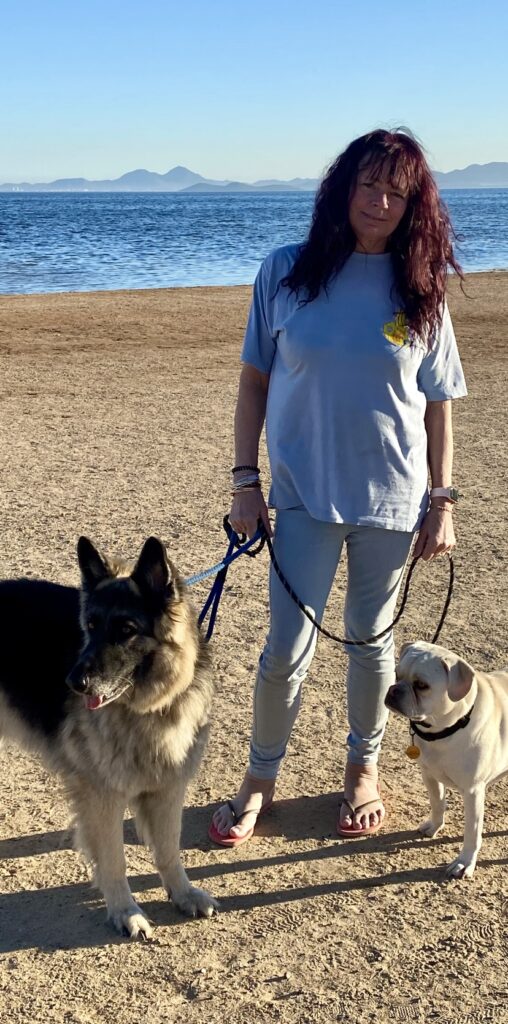
Camping Mar Menor is a good campsite in a wonderful (albeit somewhat isolated) setting, right on the waters edge in the middle of a small nature reserve. I’ll qualify ‘isolated’ – There’s an easy half hour walk through the nature reserve and then along a quiet beach promenade to Los Alcazares. There is also a military airport nearby but there were no flights during our short stay (not that Vanya would have been bothered – quite the reverse).
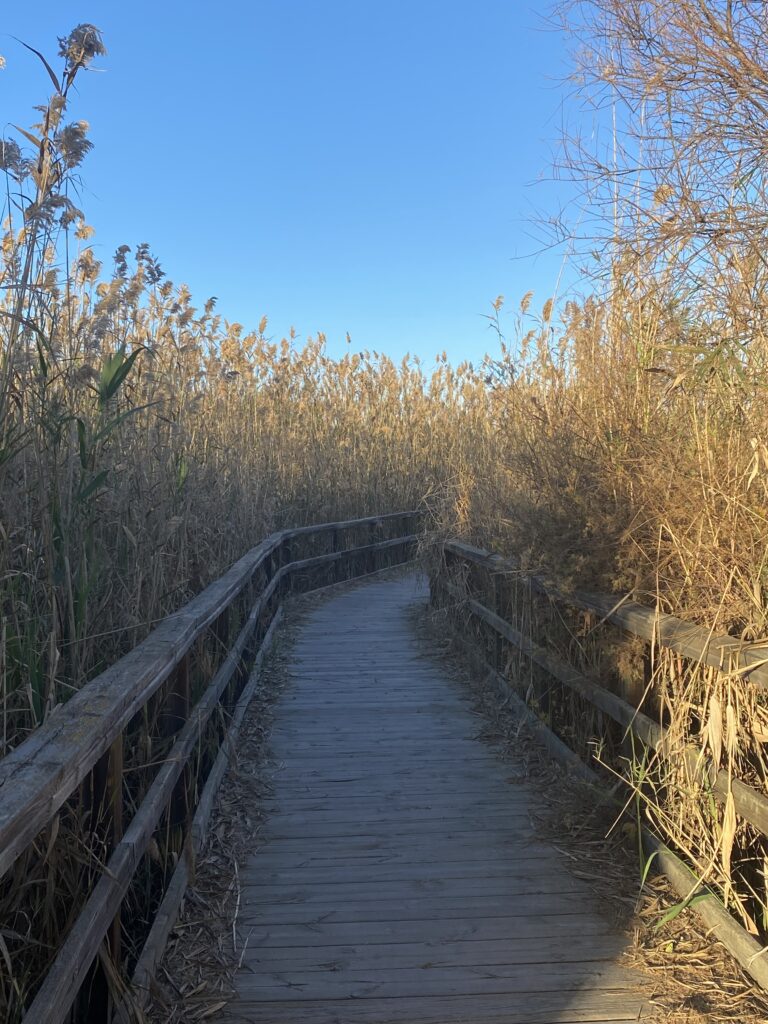
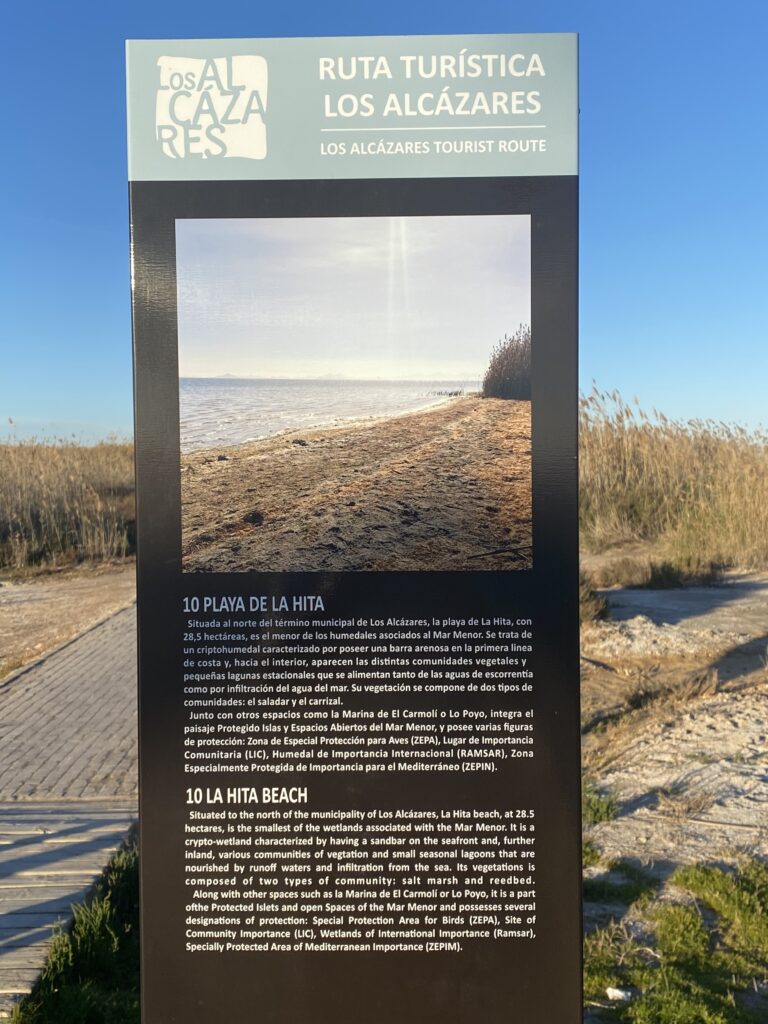
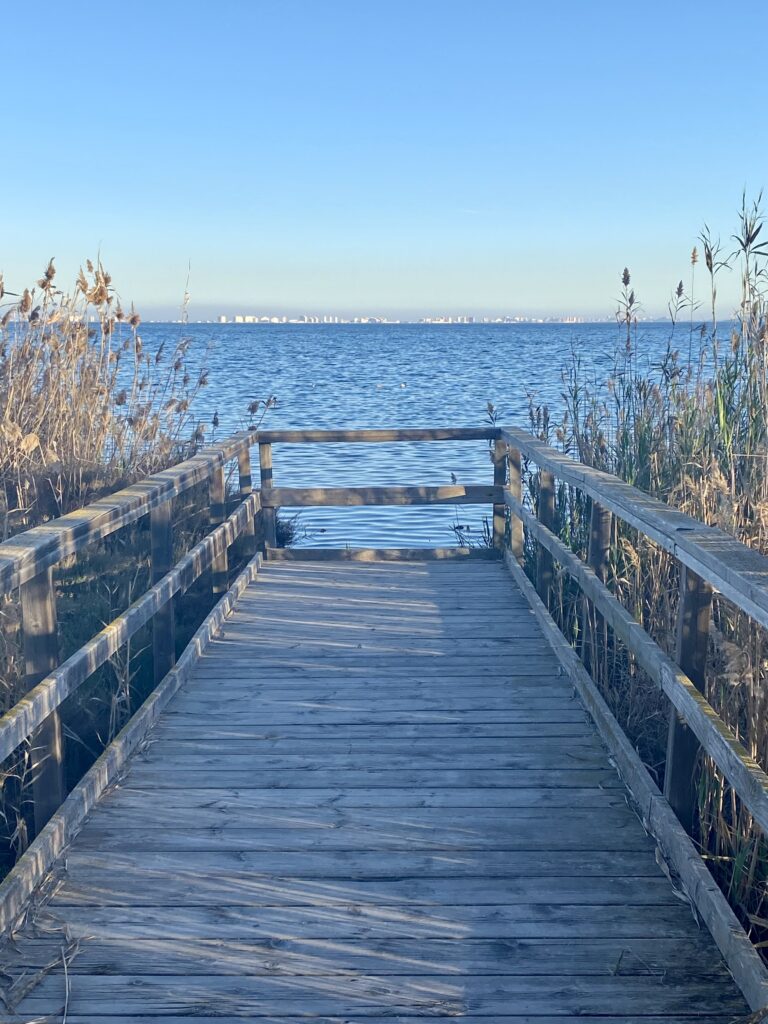
The campsite has a good restaurant, the Kinita, specialising in seafood. There is an outside seating area right on the beach but while the weather was bright and sunny during the day it was too cold at night to want to sit outside. We stayed inside and had one of the best meals of our tours to date; Turbot for me and a large Sole for Vanya followed by two very decadent desserts.
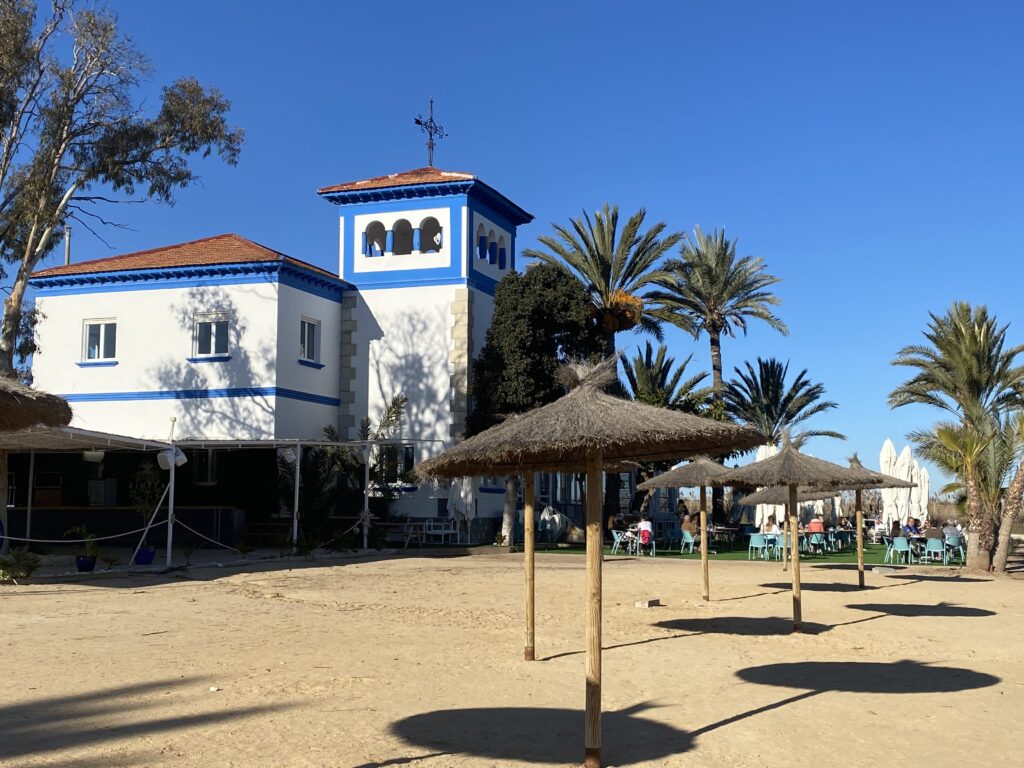
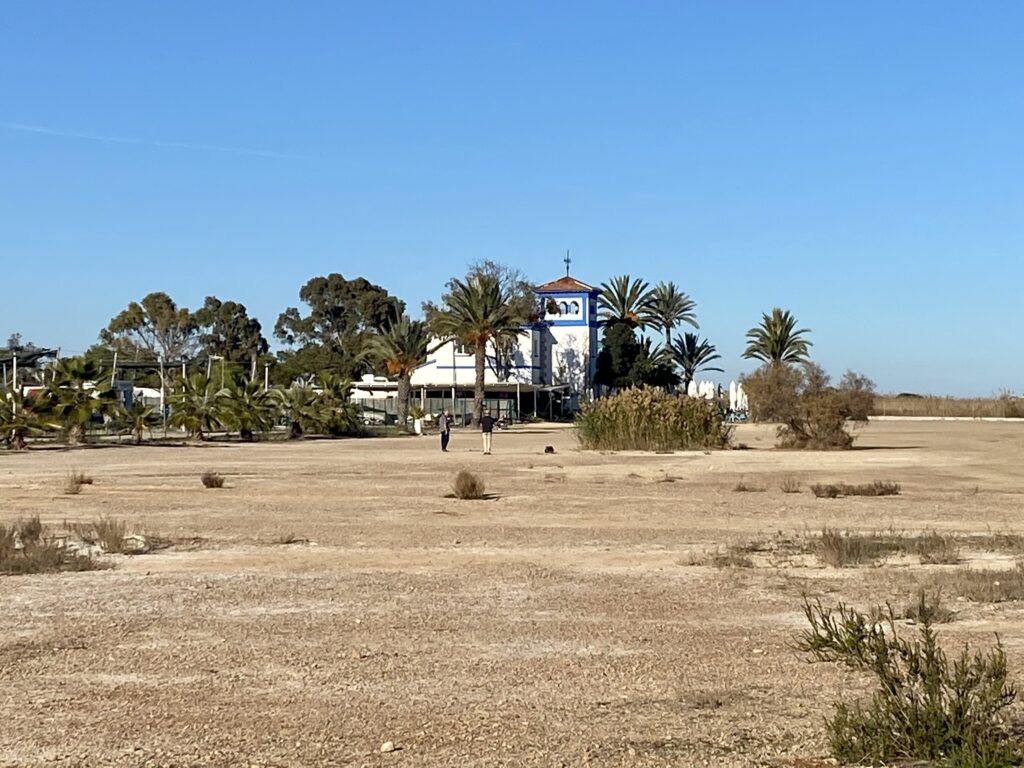
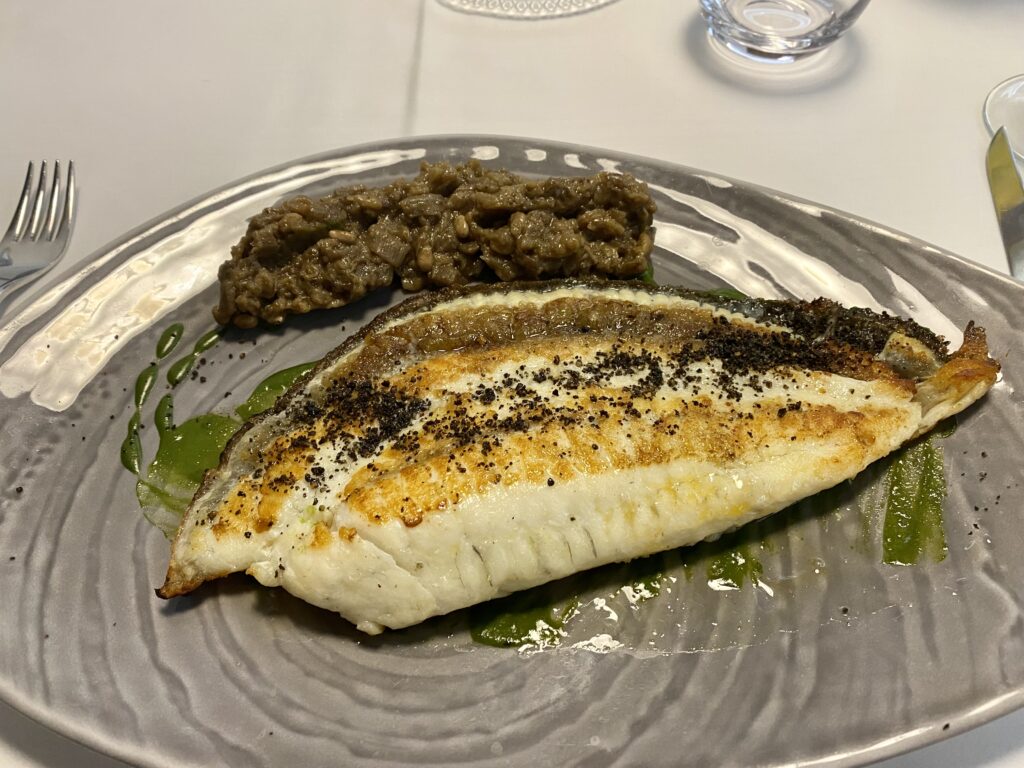

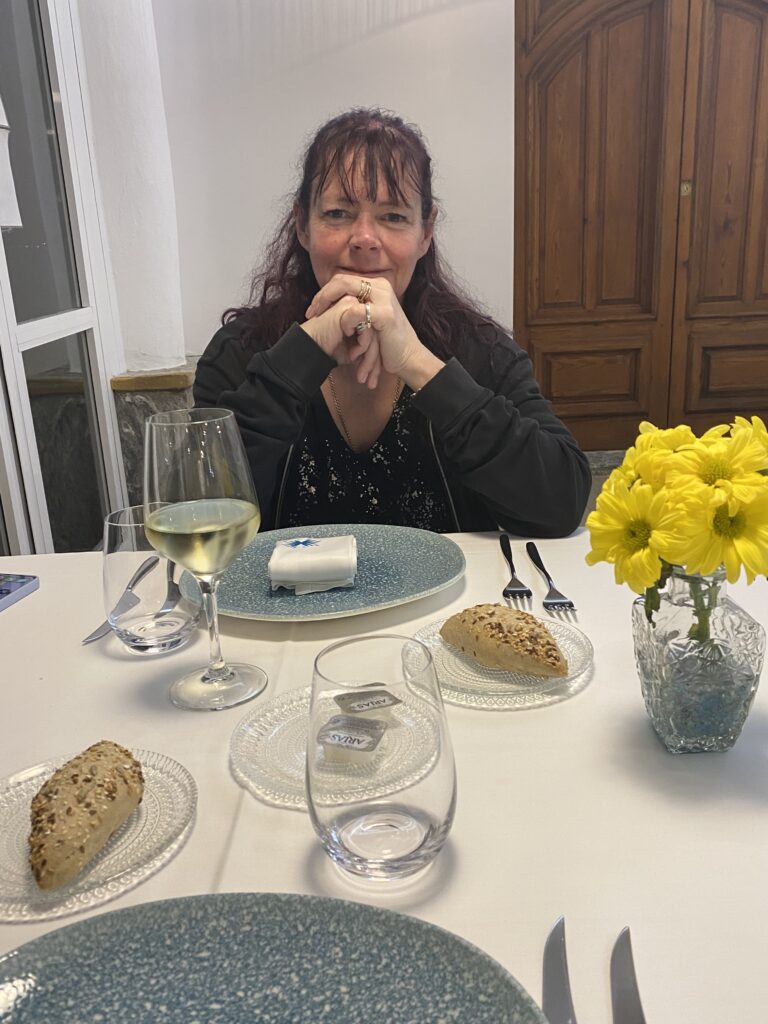
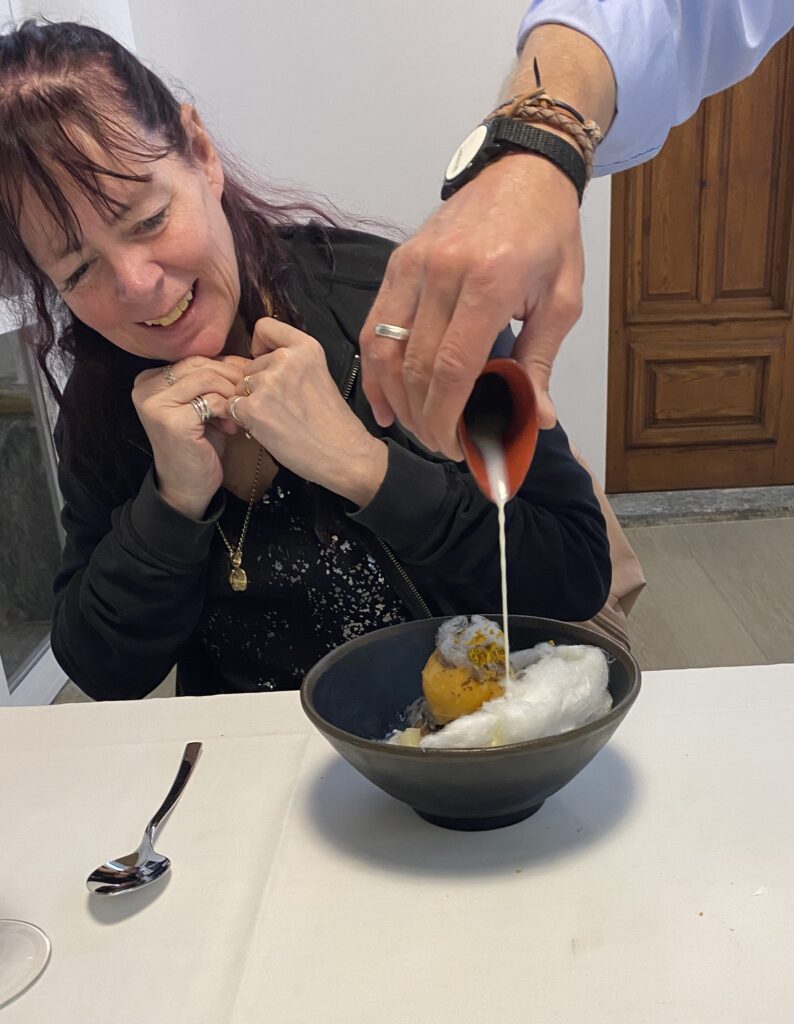

The campsite was really very good with massive, shaded pitches and all the facilities you need for an extended stay (and, believe me, we seriously thought about staying on) but with this being such a short tour we reluctantly elected to move on.
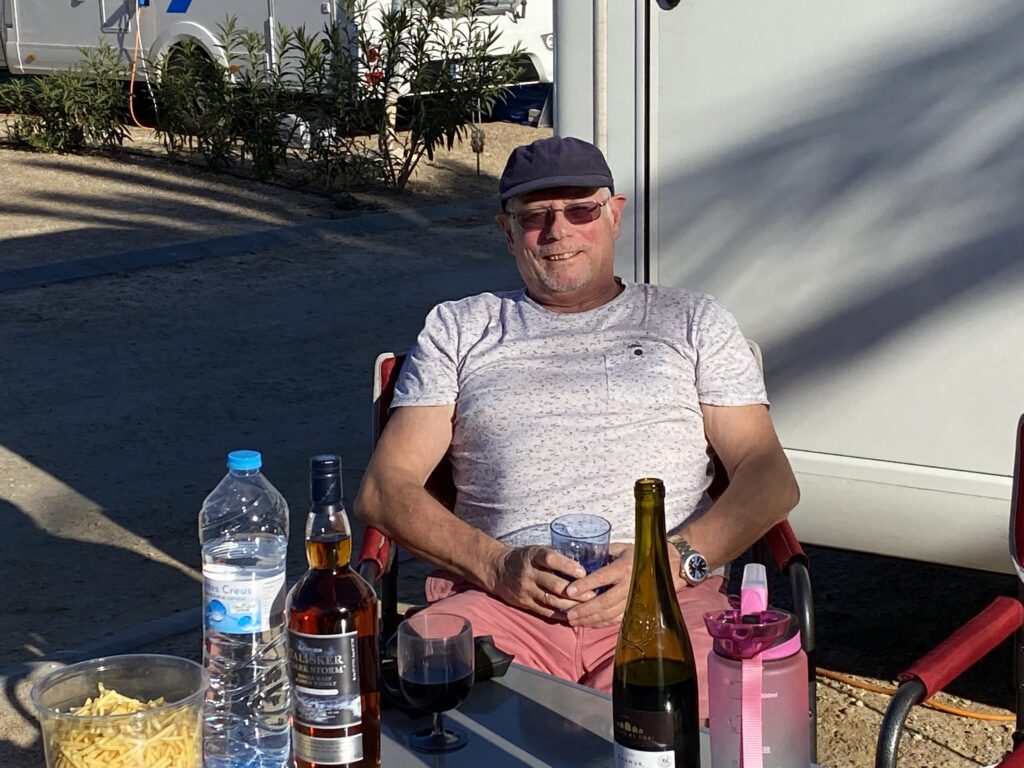
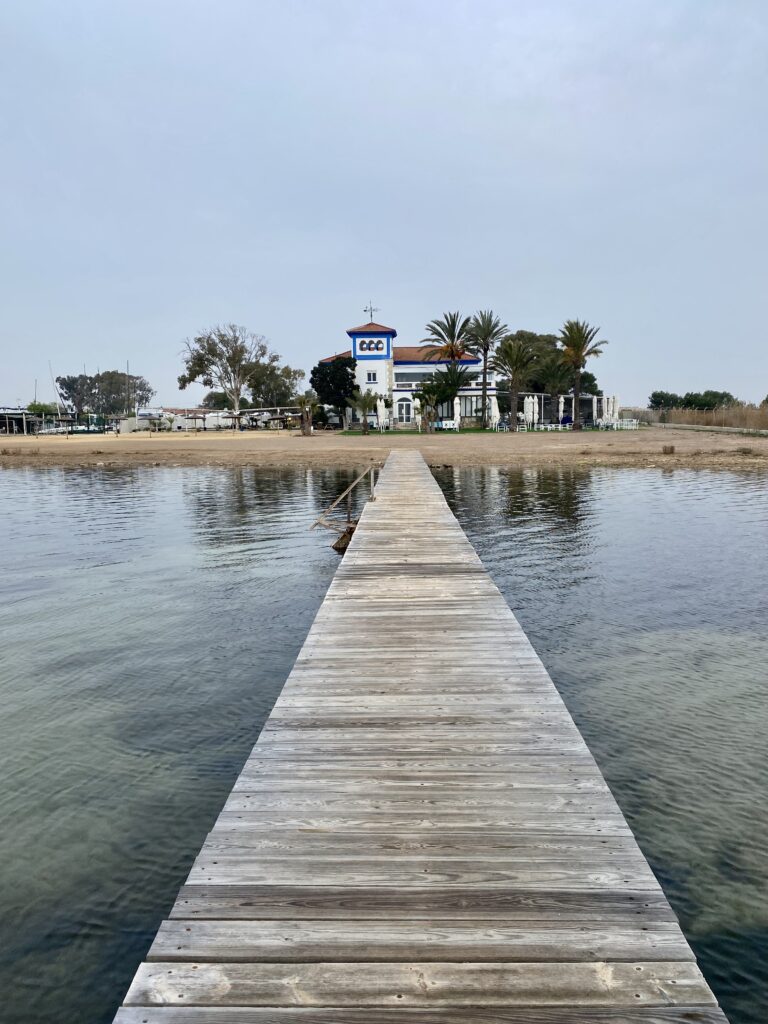
Staying in the province of Castellon we moved further south this morning to Peniscola (pronounced ‘pen-yiss-cola’), a popular tourist resort in the summer but fairly quiet this time of the year. We wouldn’t have it any other way.
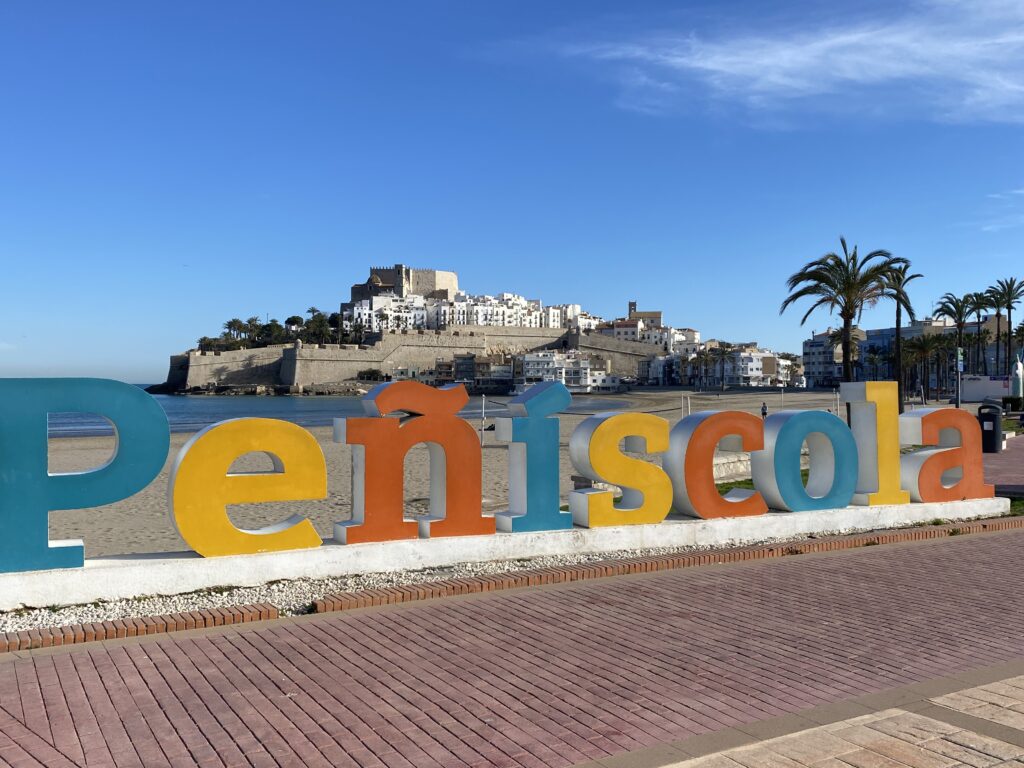
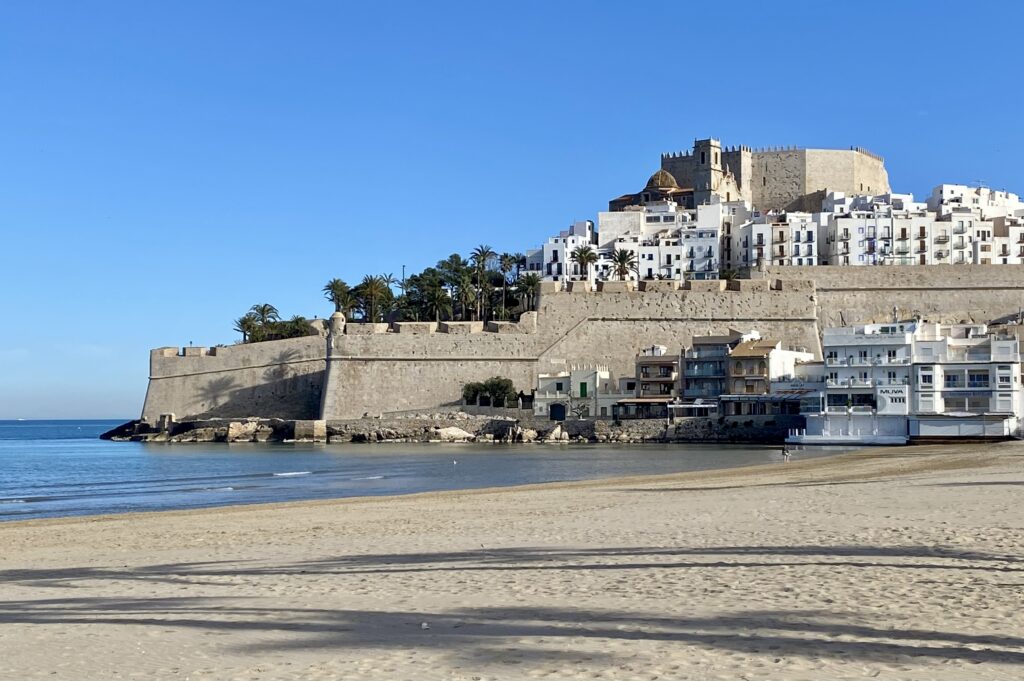
Peniscola has a fine wide sandy ‘blue flag’ beach (Platja Nord) some 5 kms long which is overlooked at the town end by a 14th century templar castle which was built on the site of a Moorish citadel. The official name of the castle is the ‘Pontifical Templar Castle of Peniscola’.
Both Peniscola Castle and the Platja Nord Beach figured prominently in the 1961 Anthony Mann film ‘El Cid’ starring Charlton Heston and Sophia Loren. The castle was used as the setting for Valencia and it was along the Platja Nord beach that Charlton Heston, in the role of Don Rodrigo Diaz de Vivar (El Cid), rode his white charger at the end of the film. The castle was also used in ‘Game of Thrones’ as the setting of the fictitious city of Mereen.
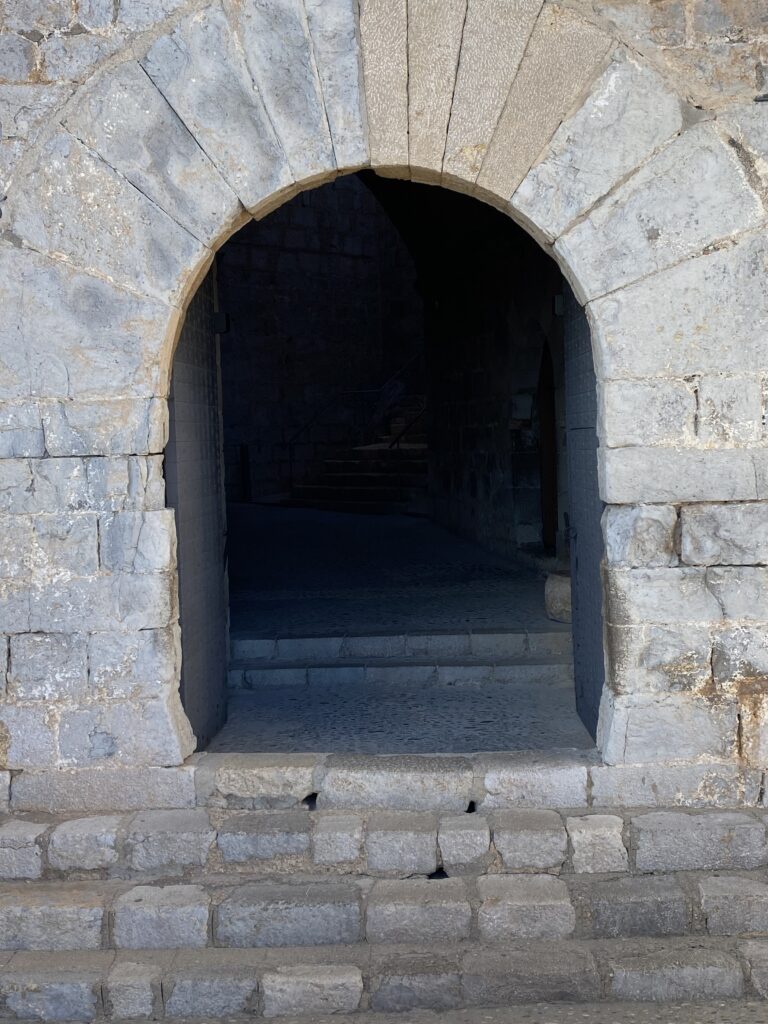

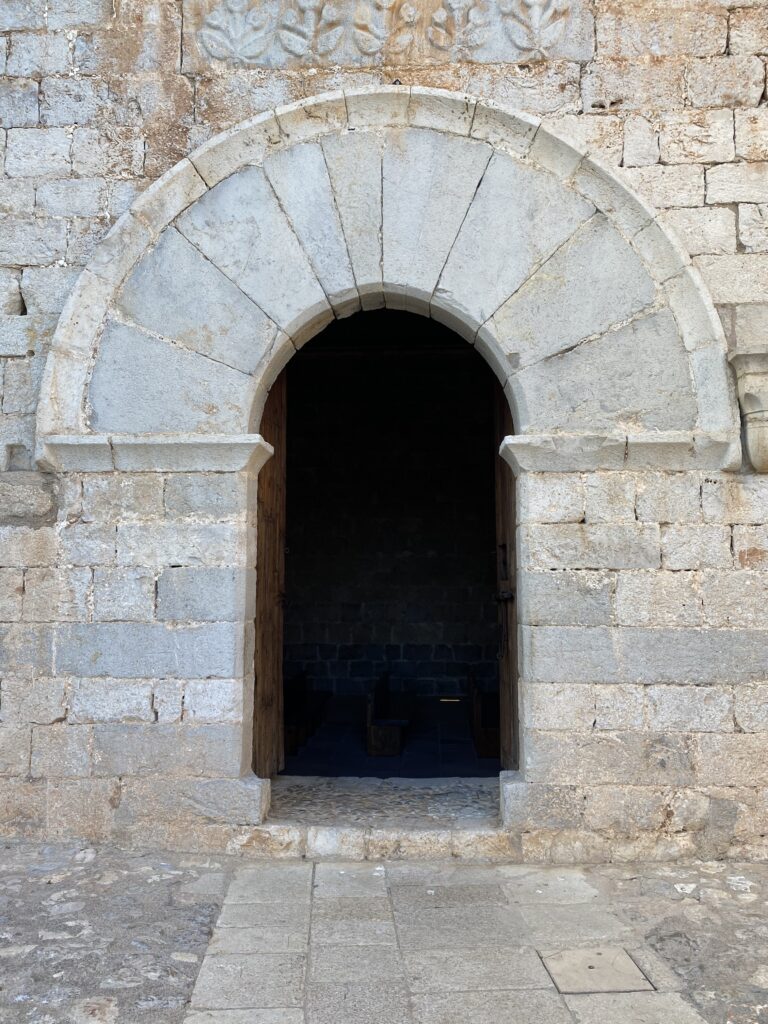
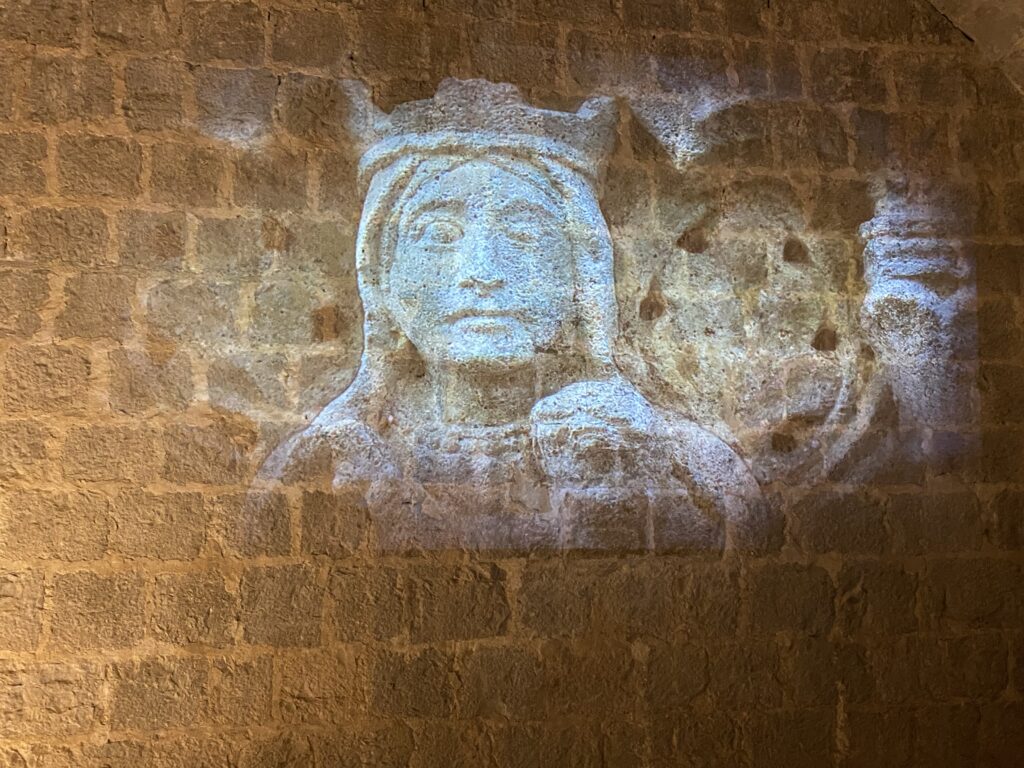
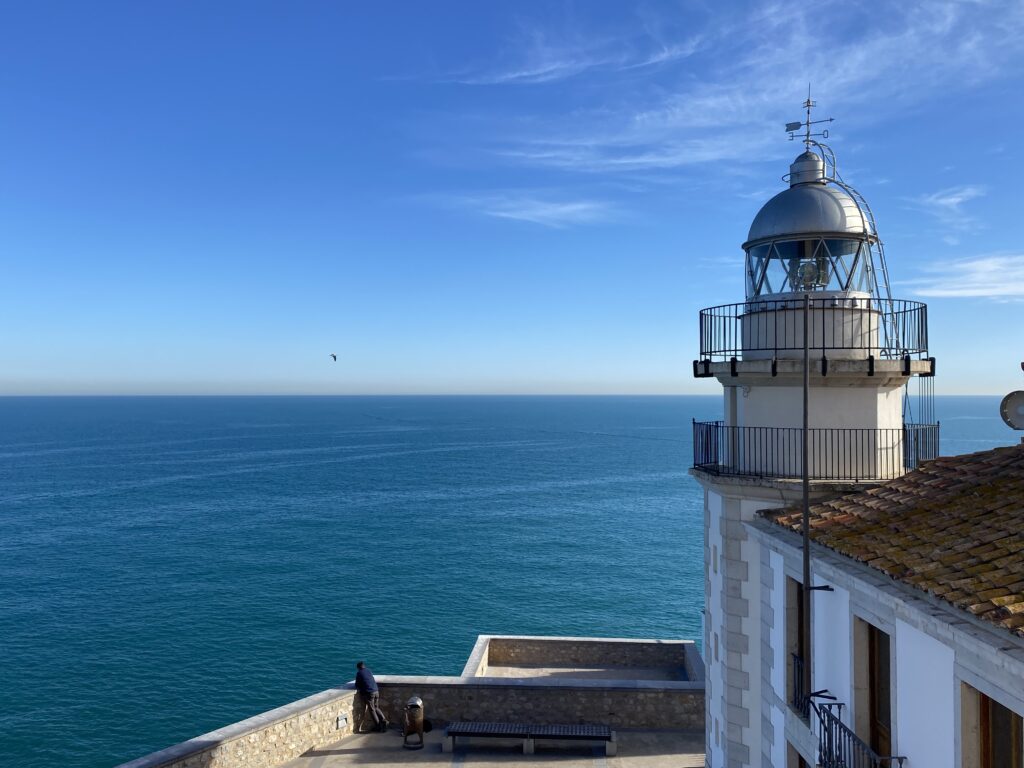
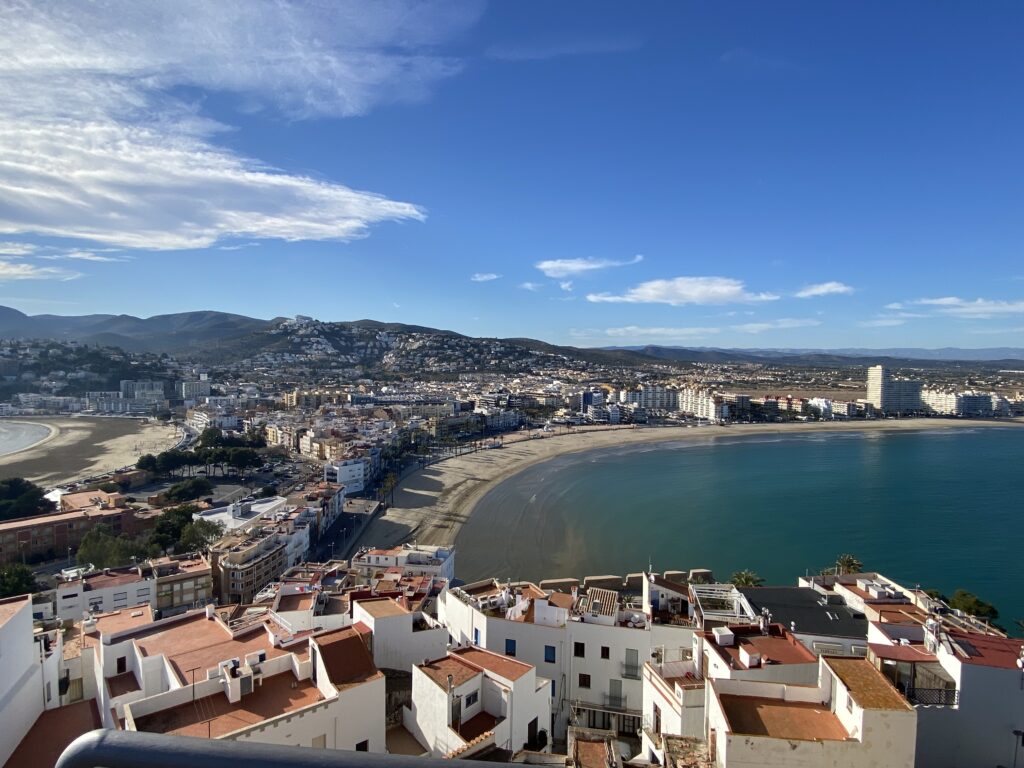
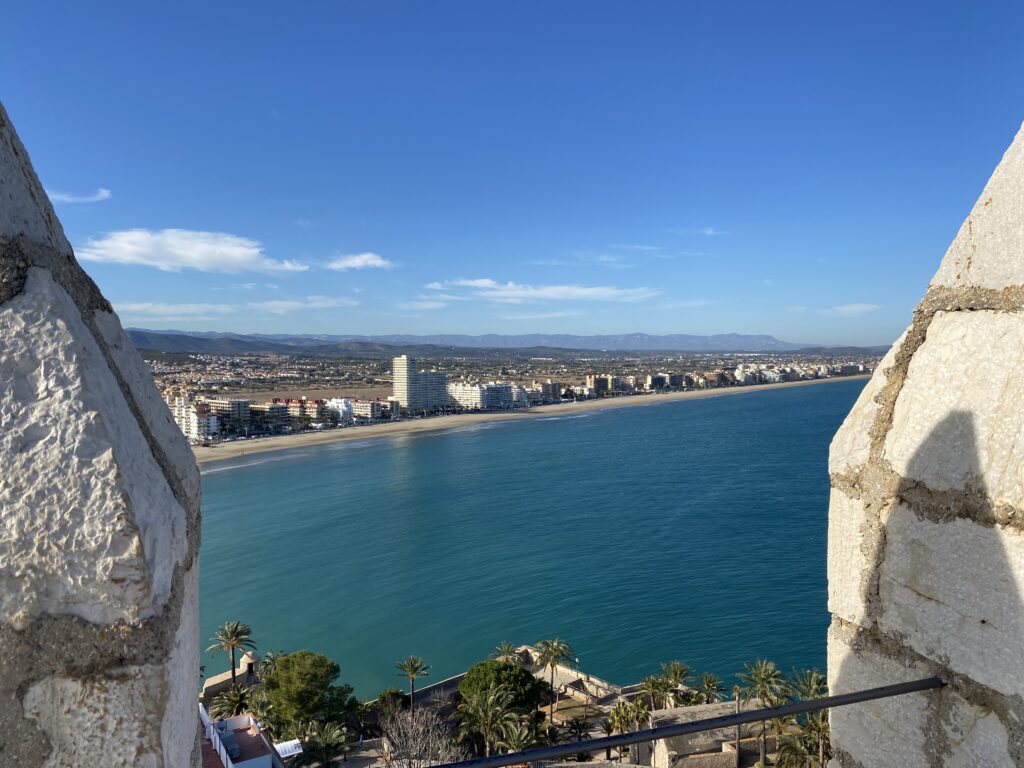
Peniscola Castle was home to Pope Benedict XIII for 8 years until his death in 1423. This was the time of the great schism which saw three popes being elected at the same time, one in Rome, one in Avignon and Benedict XIII (often referred to as Papa Luna) in Peniscola although Papa Luna was later declared an anti-pope and excommunicated by Rome.
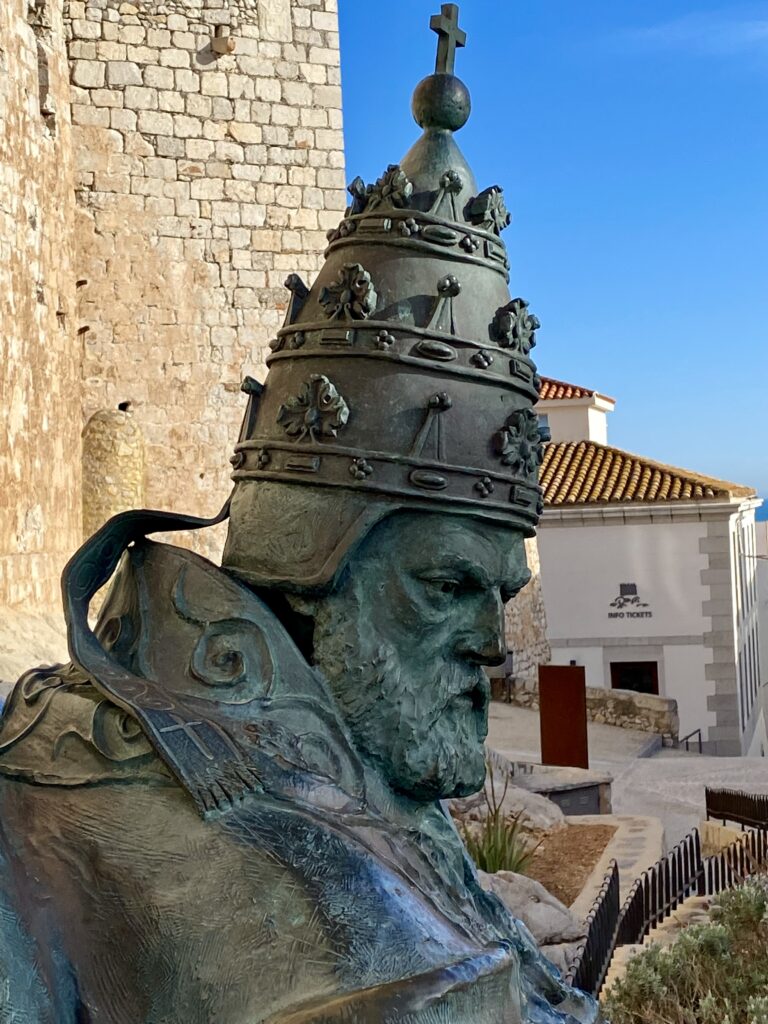
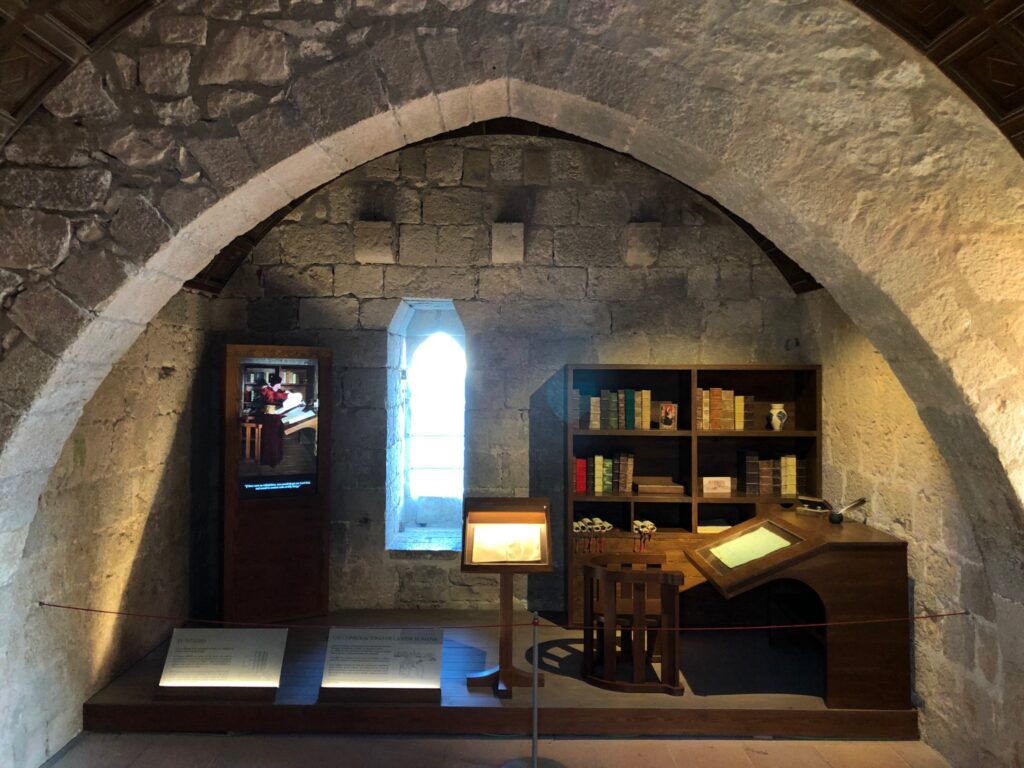
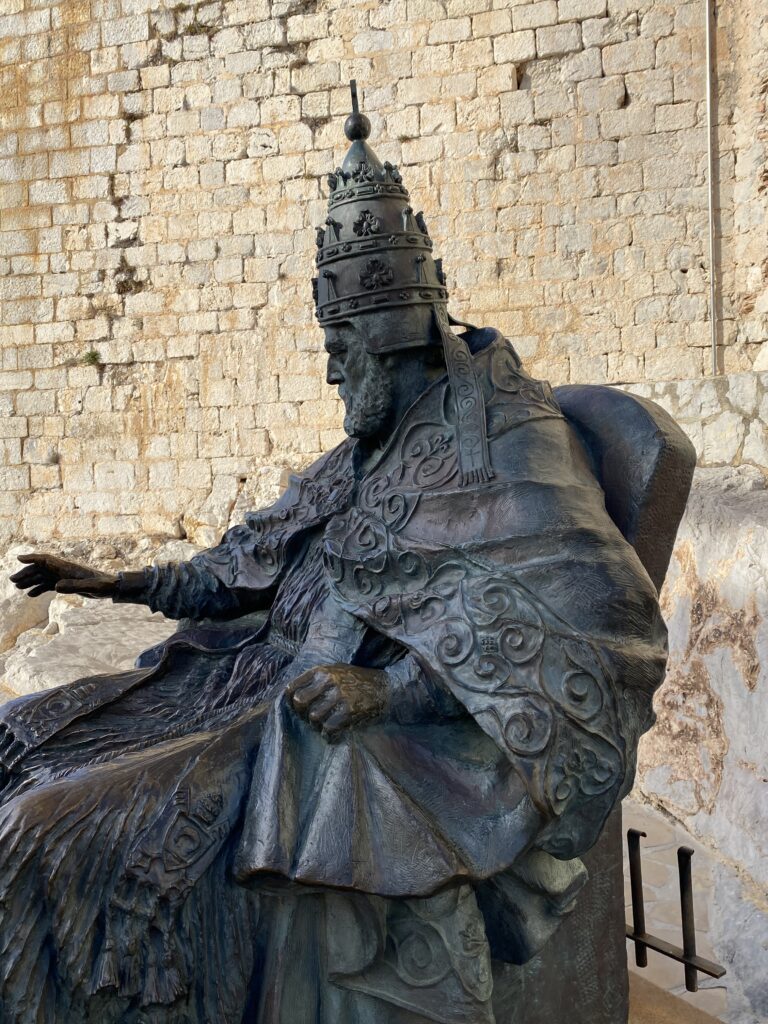
Peniscola’s old town is entirely enclosed within the walls of the castle. It is small but very pretty with narrow, cobbled streets; most of which are now lined with small bars and craft & souvenir shops (although absolutely nothing other than the castle itself was open in the old town throughout our short stay).
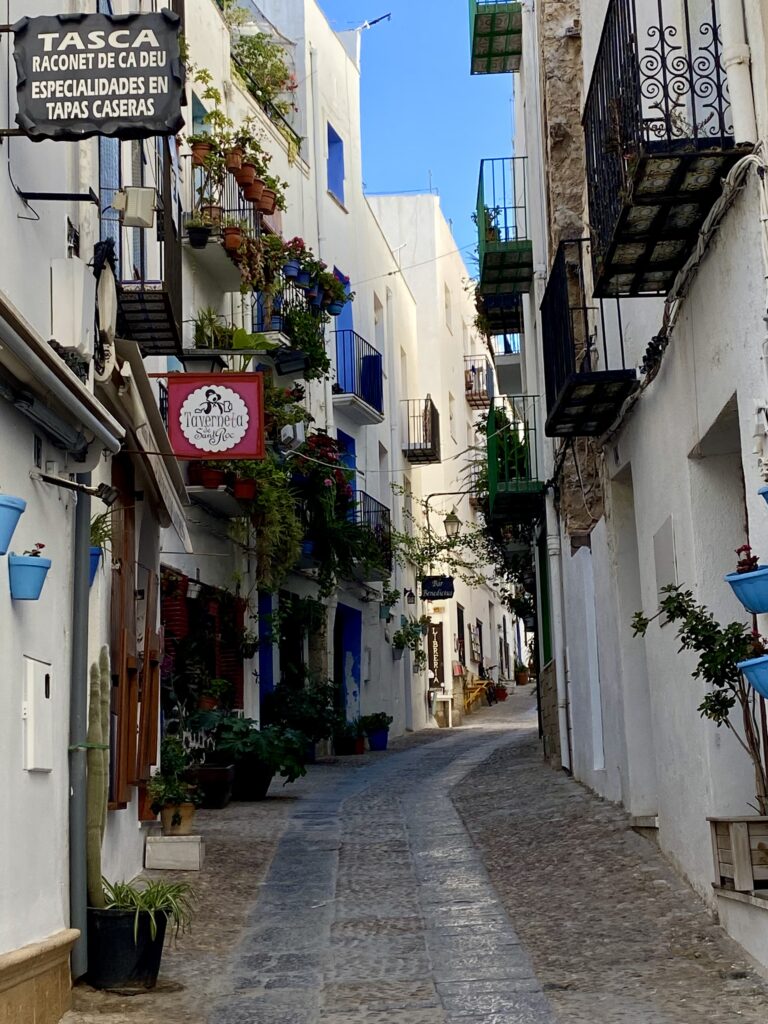
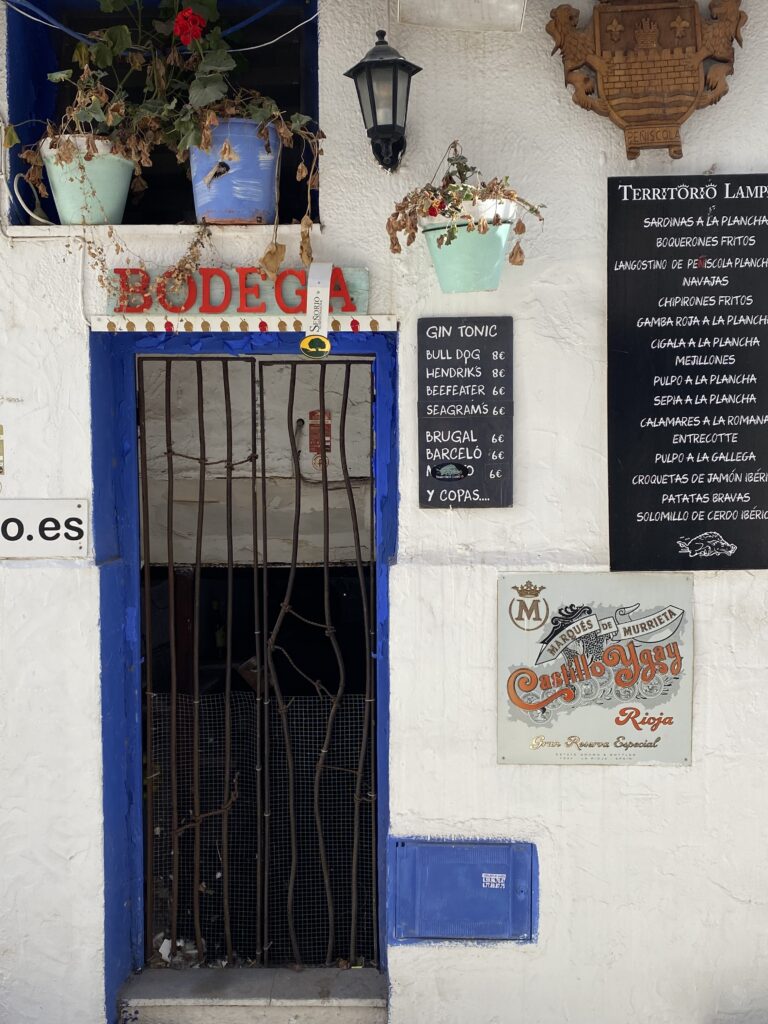
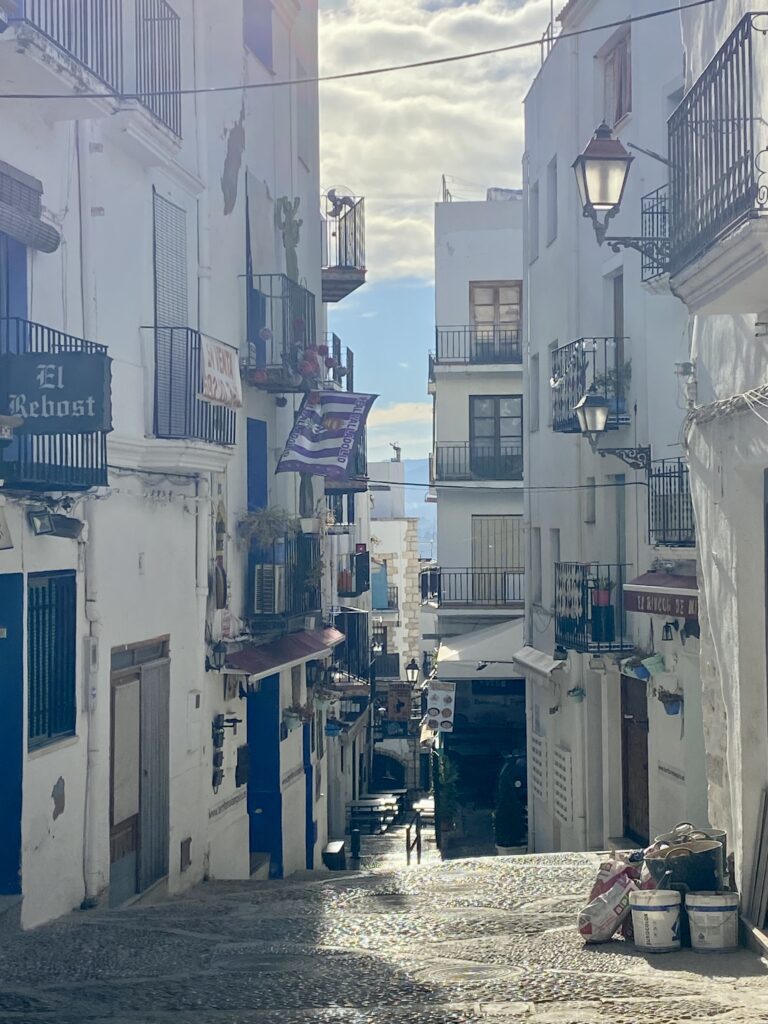
Quite often during these tours, I go walkabout for a few hours to explore (while Vanya caches up on her sleep or on her Spanish language studies) and then, later in the day, I return with Vanya to eat and visit the more interesting sites. We did the same in Peniscola and, while (at least during the close season) there is little of real interest in Peniscola outside of the castle and the beach, the town is one of those places that has to be seen at night. It is very pretty.
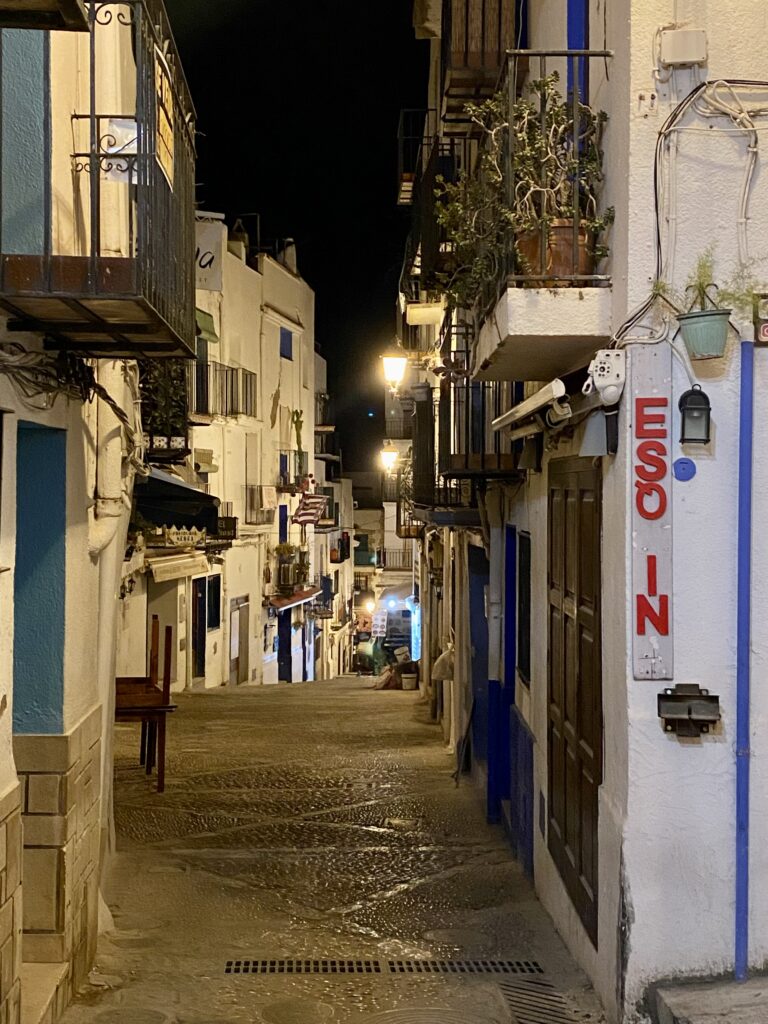
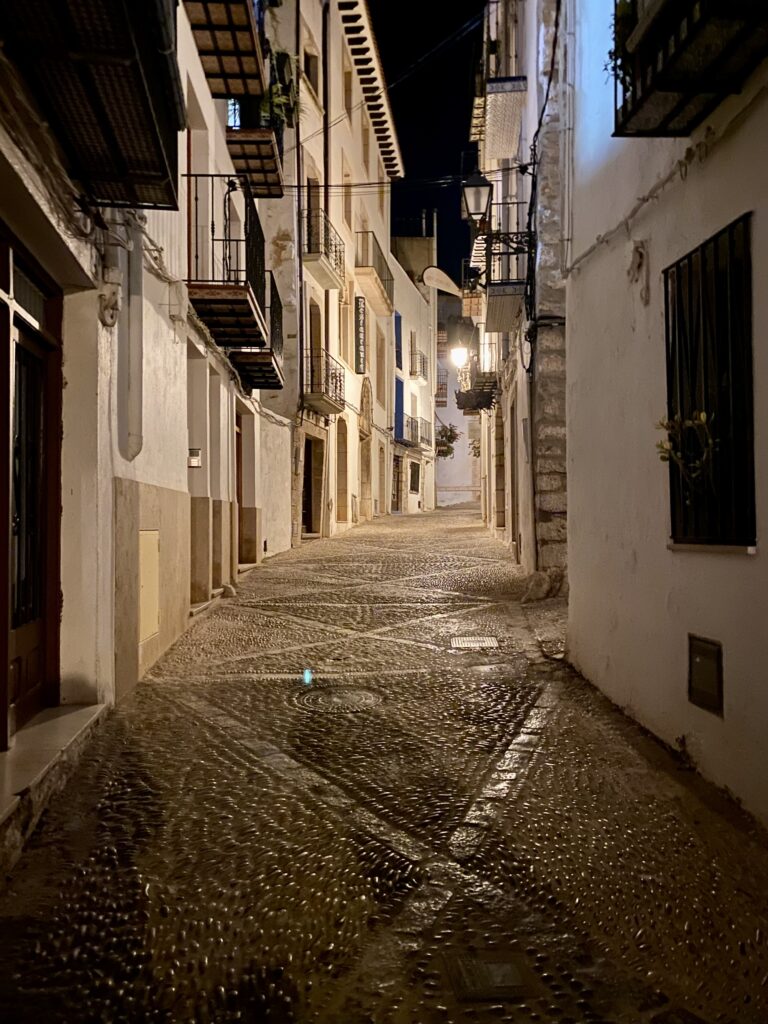
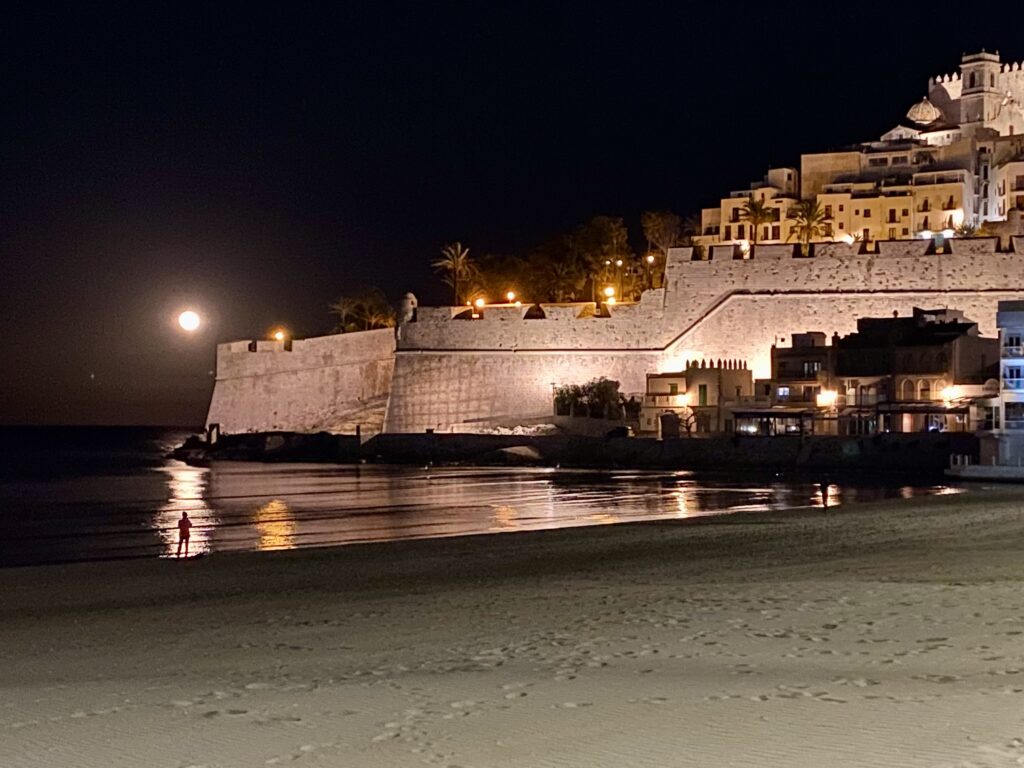
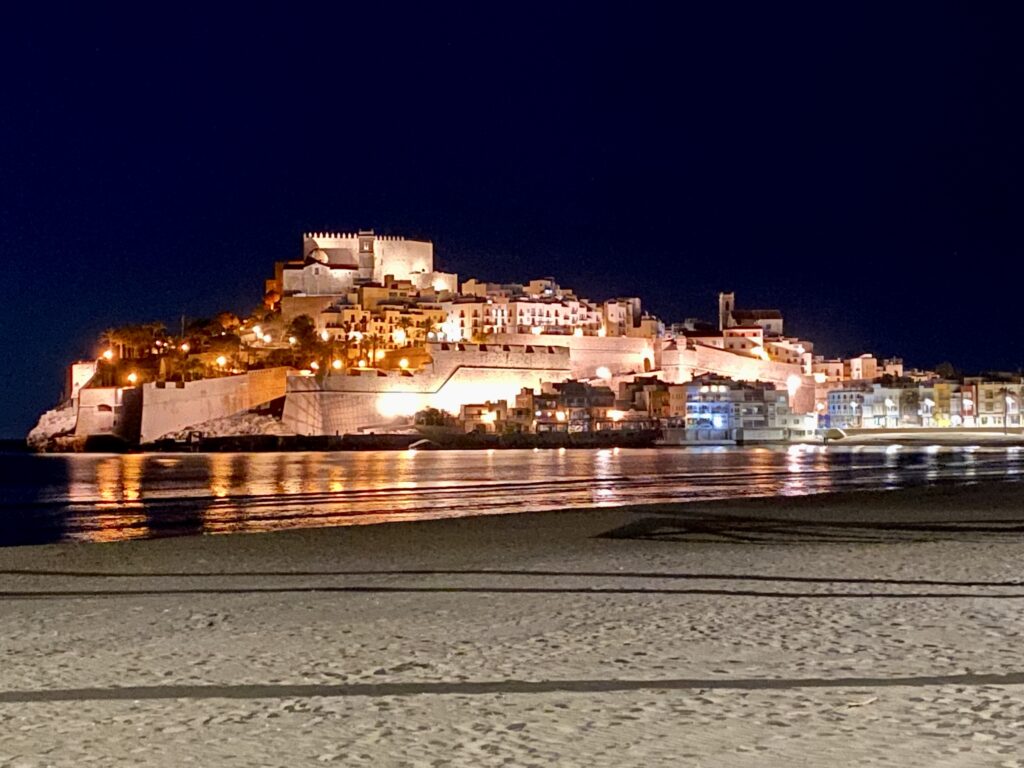
And so, on our way to warmer climes, we arrived in Cambrils (some 20 kms south of Tarragona) and decided to stay for a couple of days. Our reasons were that (a) it was getting warmer by the day (and the forecast was even more promising) and (b) there is far more to Cambrils than L’Estartit (and for the most part it is open) and (c) and perhaps most importantly, we had arranged for a local vet to see Nala and Beanie about a Spanish Pet Passport (now that, because of Brexit, their existing EU Pet Passports have been rendered useless).
Our decision proved a good one. The fact is, we needed a rest. Ordinarily we take our time on these tours, driving as little as possible and fully exploring and/or experiencing the places we choose to stop at. That simply wasn’t happening on this particular tour. Storms and freezing weather across the whole of France compelled us to head south asap but; it was time to get back to doing things correctly and that day’s sunset promised great things…
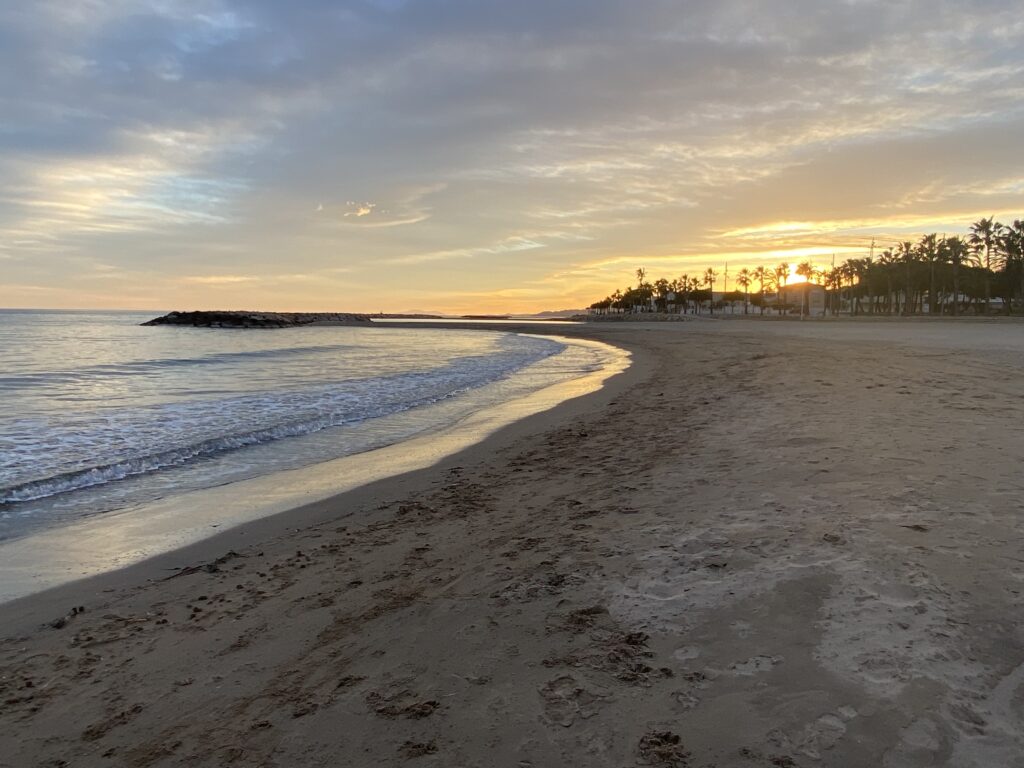
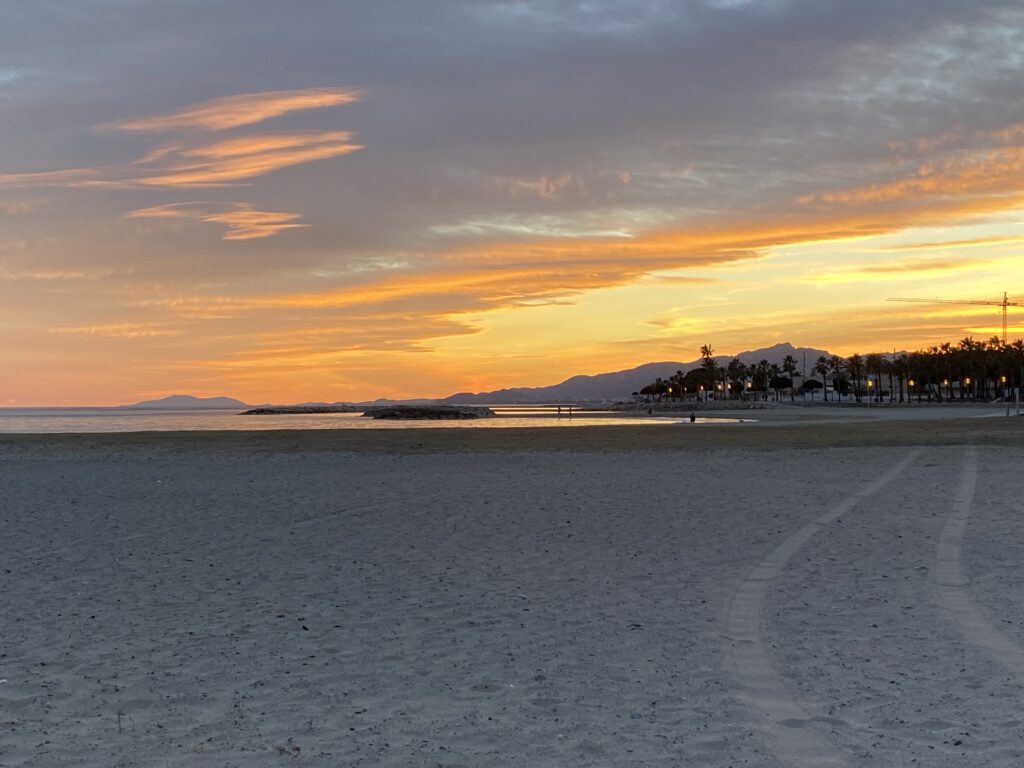
We were staying at Camping La Llosa which sits on Playa La Llosa and is an easy 15 minute walk into the town. Cambrils could be described as simply another Spanish summer holiday resort, albeit one with 9 kilometres of 10 blue flag, golden, sandy beaches but; what sets it apart is it’s proximity to the three mountains of Llaberia, Argentera & La Mussara (for me, water and mountains go so well together) and it’s many fine restaurants (including at least one holding a Michelin star – the Ca L’Estrany).
We didn’t get to Ca L’Estrany but; on the seafront we discovered a friendly little restaurant (Braseria de Porte) with a very appealing menu and we sat and ate and stayed until they closed. Vanya rated her meal, which was Crayfish followed by a Seafood Paella, as one of the best of her life. I tried Razor Clams for the first time in my life but found them a mite rubbery. No matter, we would both recommend the Braserie de Porte.
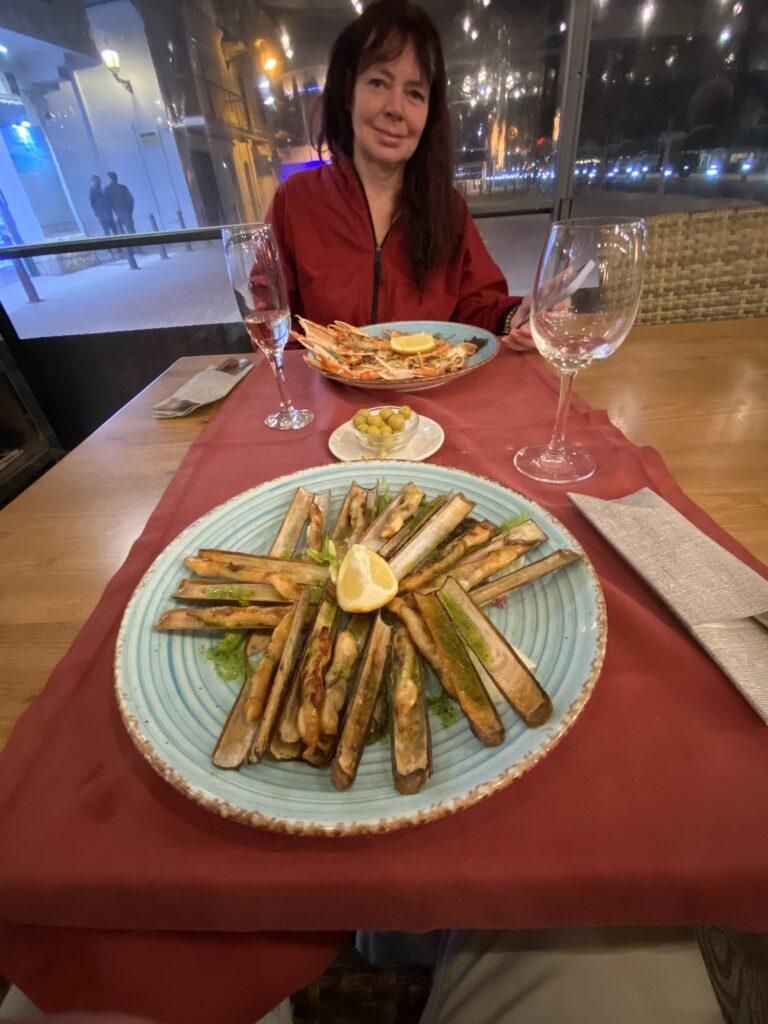
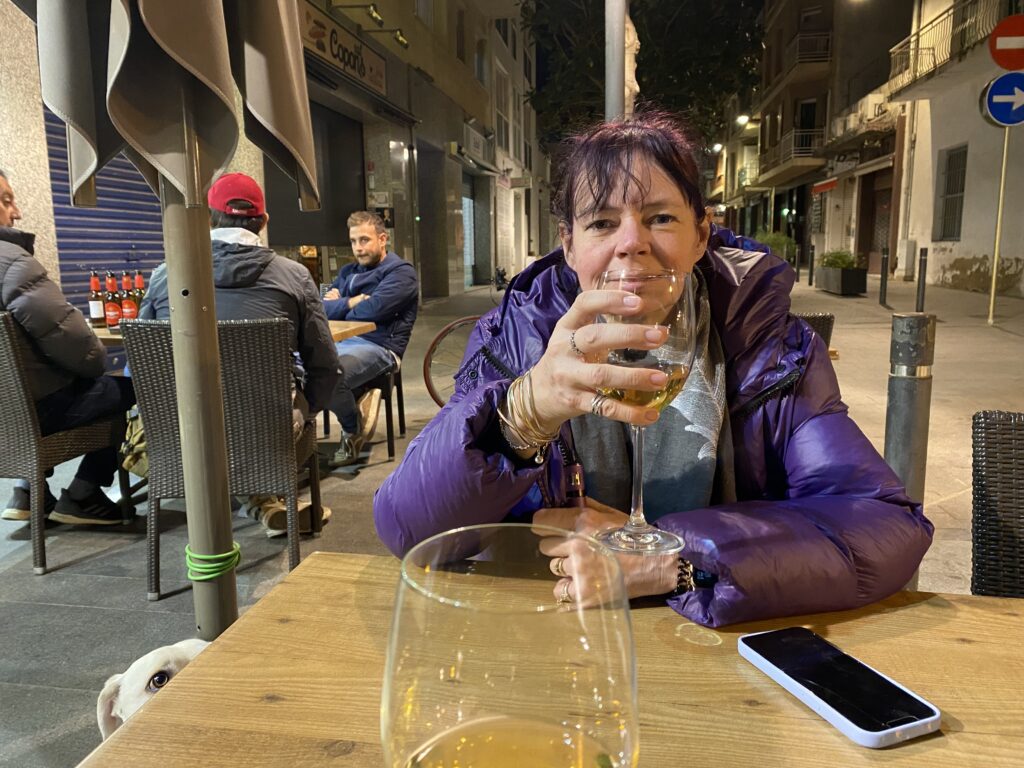
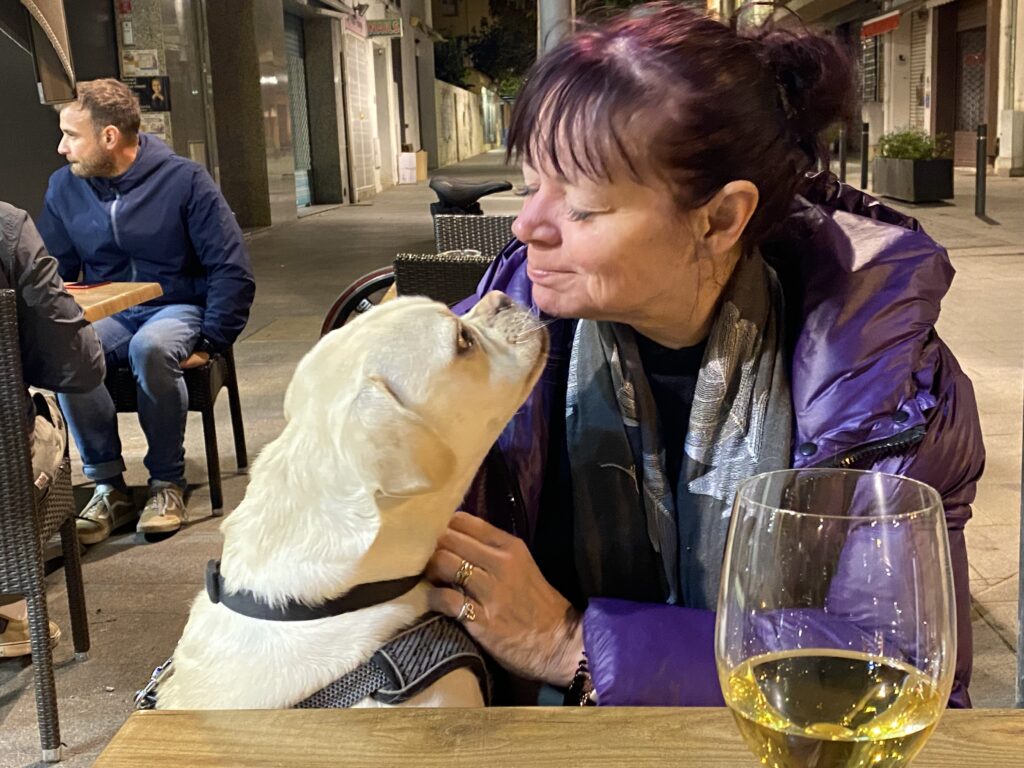
The next day I went for a long walk along the coast to and from Salou – no reason other than that I fancied the exercise.
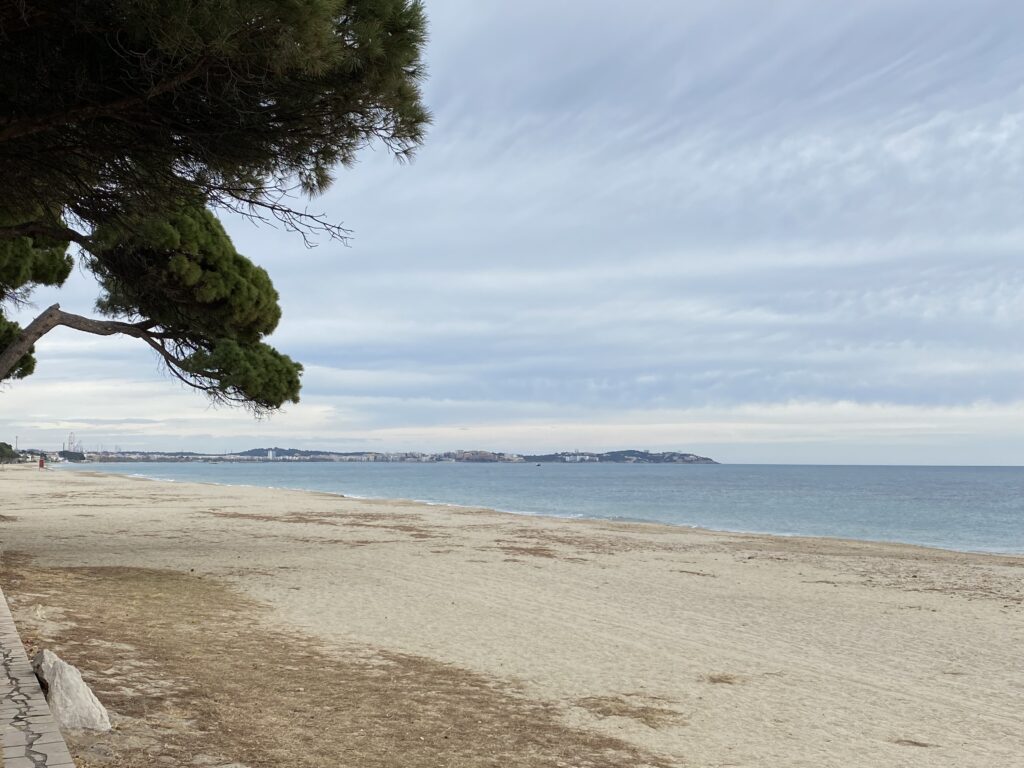

During my walk I stumbled across a rather intriguing work of art which I subsequently learned was created by David Callau Gene in 2011. They are sculptures of three fishermen and two mermaids and were put up to mark the 100th anniversary of a great storm which killed 140 Cantabrian fishermen, many of them from Cambrils.
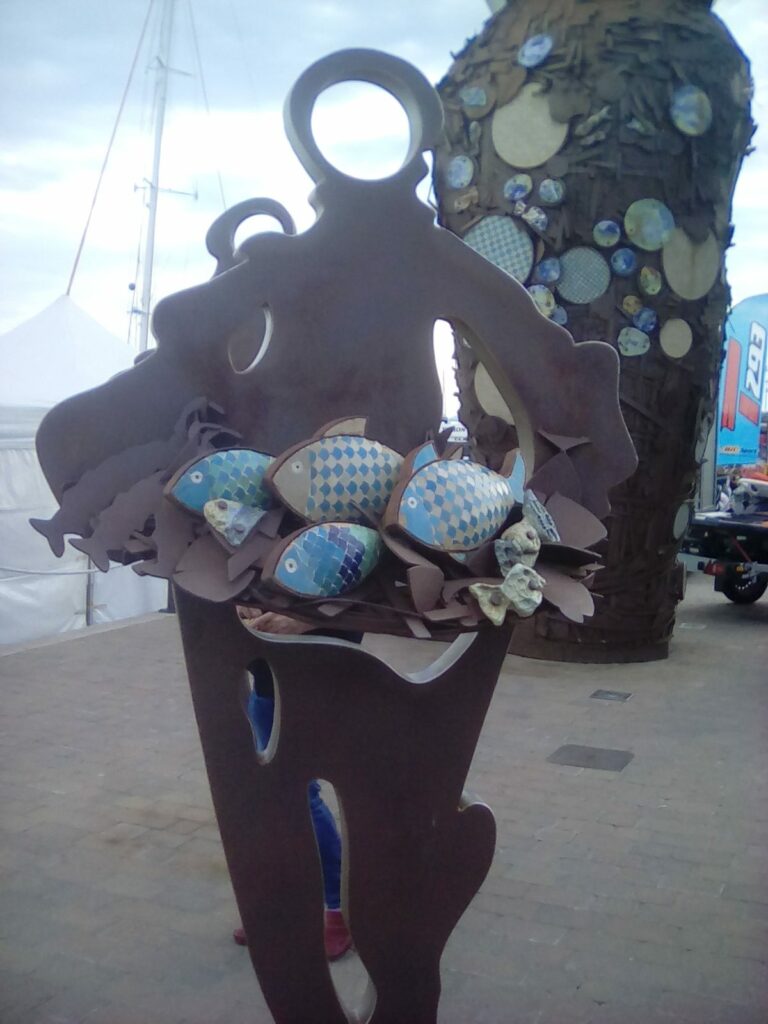
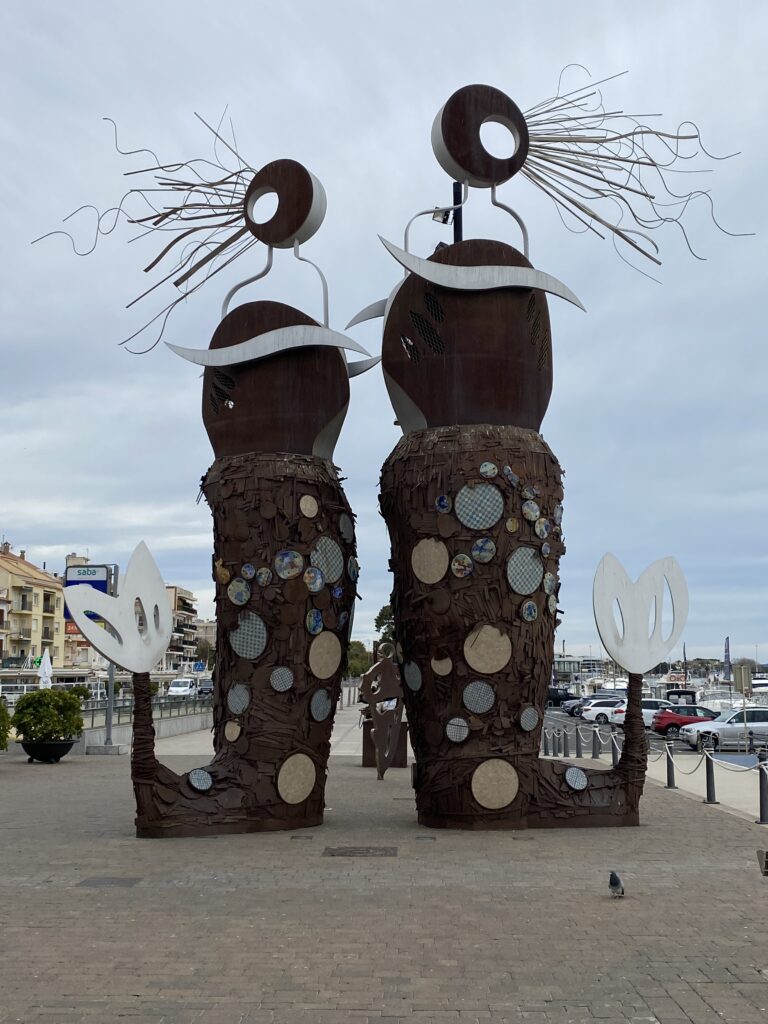
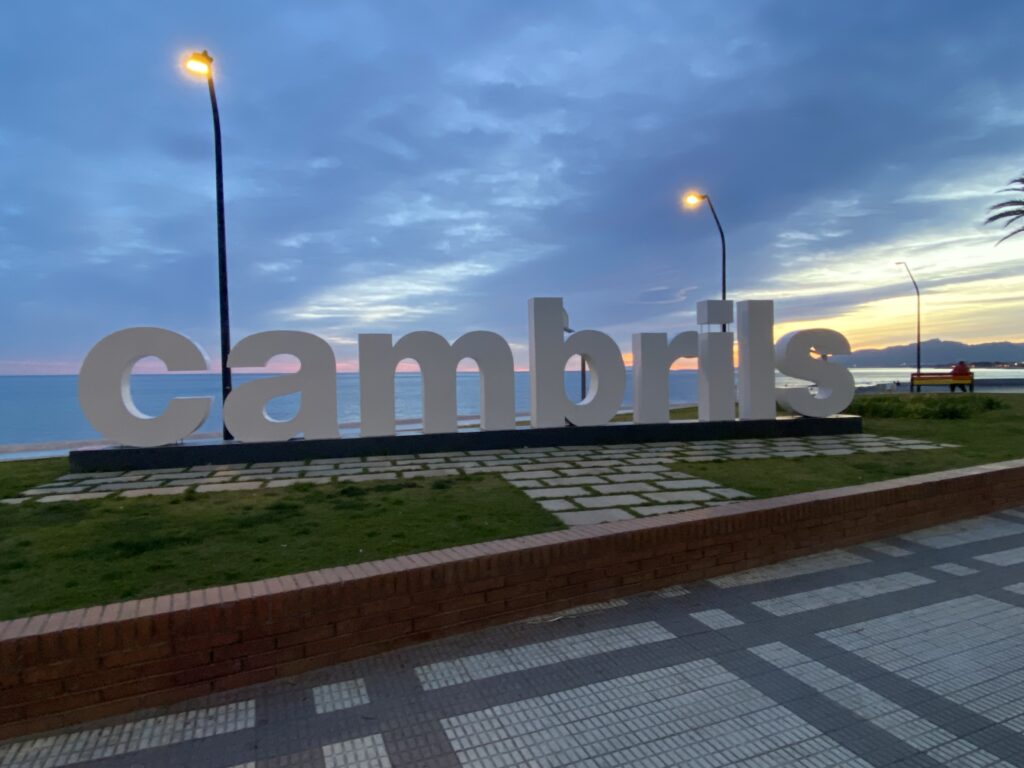

Yes, we enjoyed Cambrils – as much for the rest as anything. And yes – we managed to get Spanish Pet Passports for the dogs. They now have dual nationality.
Leaving L’Estartit very early by our standards we set off further down the Catalonian coast for Cambril pausing at Tarragona on the way.
Much of our time in Tarragona was walking to, from and along the lively, wide, tree lined Rambla Nova (the city’s main street) where we also sat and enjoyed some of the local beer and tapas. We saw a few of the city’s sites during our short sojourn but missed so much more. You need a good two days at least to do the place justice.
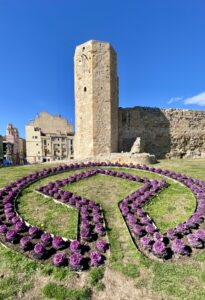
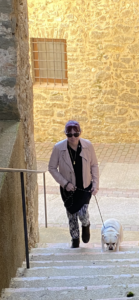
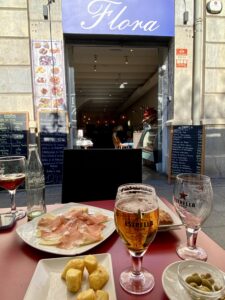
Walking alongside one of Tarragona’s fine beaches (the Playa del Milagro) to the Rambla Nova, we passed the remarkably intact remains of an ancient Roman Amphitheatre built during the reign of the Emperor Augustus in 2 AD. Augustus wintered in Tarragona, or Tarraco as it was then known, after his Cantabrian campaign. The amphitheatre could accommodate more than 14,000 spectators and in 259 AD was the scene of the martyrdom of Bishop Fructuosus and his two deacons. How on earth any one person, let alone 14,000, could enjoy such a spectacle is beyond me but the amphitheatre is just one of many Roman ruins in the city which, collectively, have caused Tarragona to be designated a World Heritage Site by UNESCO.
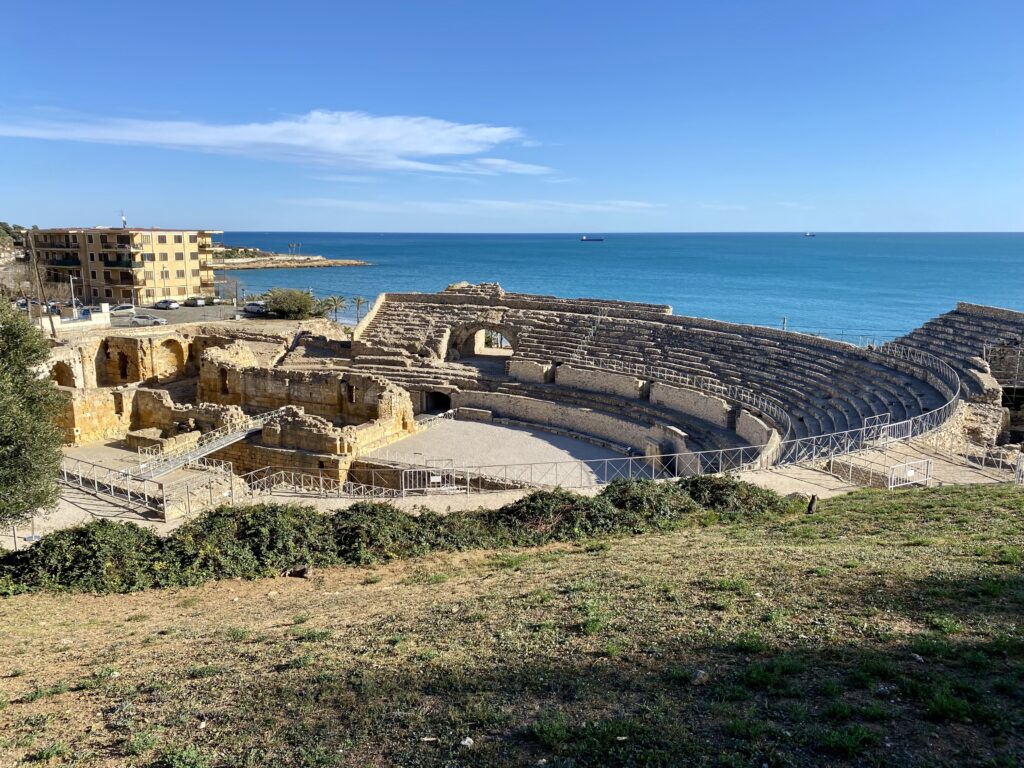
Tarragona’s 15 kilometre coastline comprises a number of beautiful beaches and the Playa del Milagro with it’s wide sandy shore is one of the most popular. One of the best views of the beach and it’s palm fringed promenade is from the Balcon del Mediterraneo which is to be found at the eastern end of the Rambla Nova.
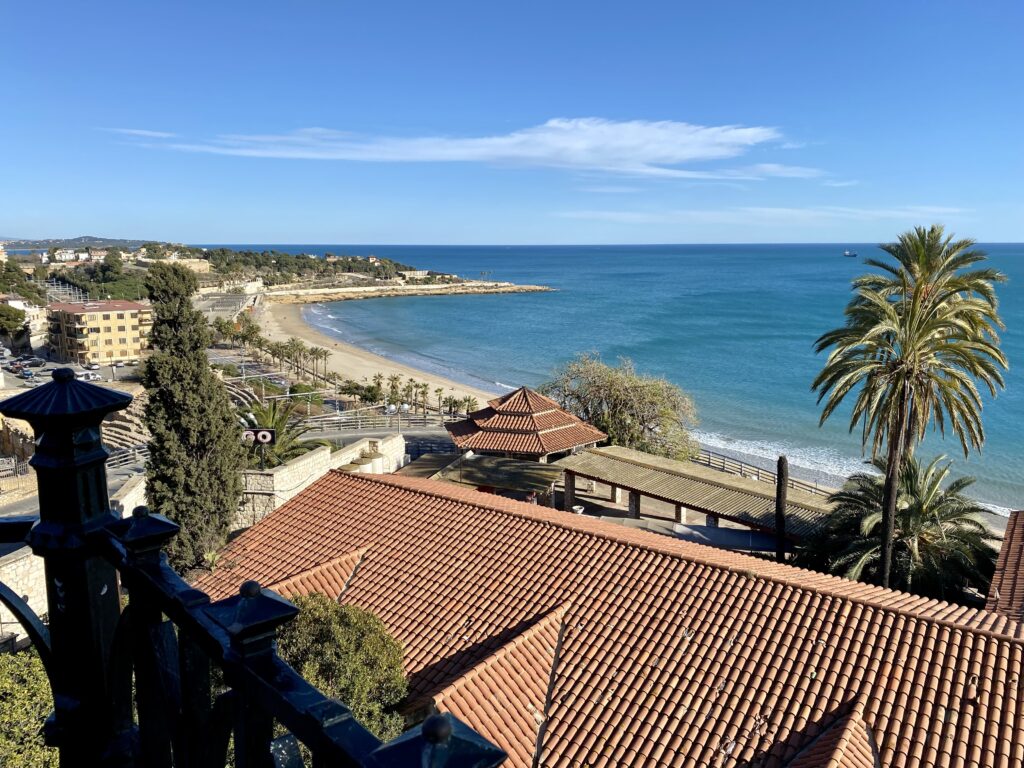
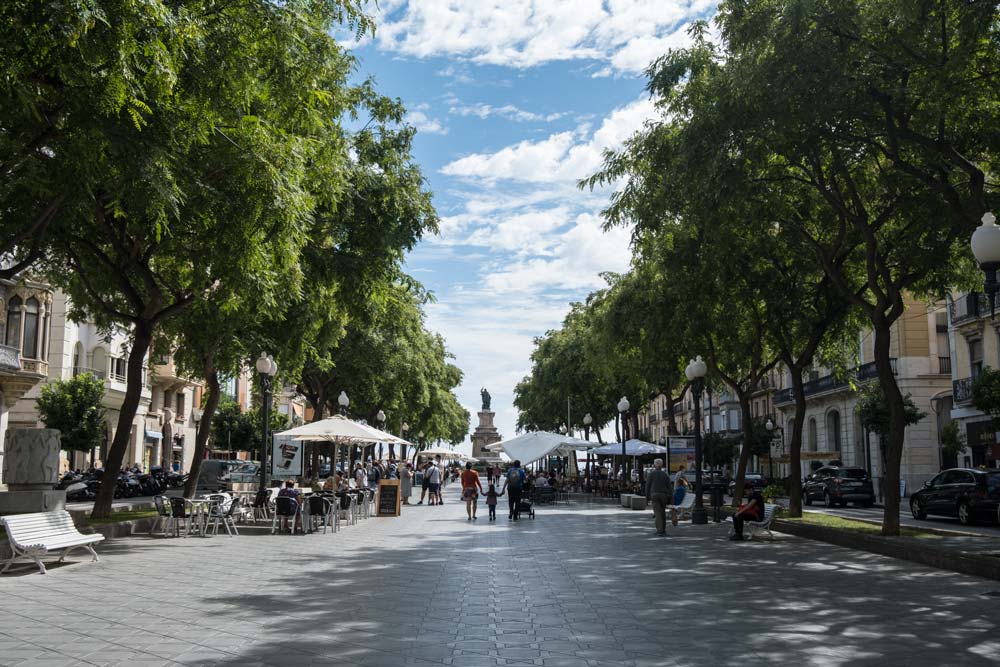

There are some interesting statues dotted across Tarragona. One in particular on the Rambla Nova caught my attention. It sits towards the western end of the avenue and is entitled “Castells of Tarragona”.
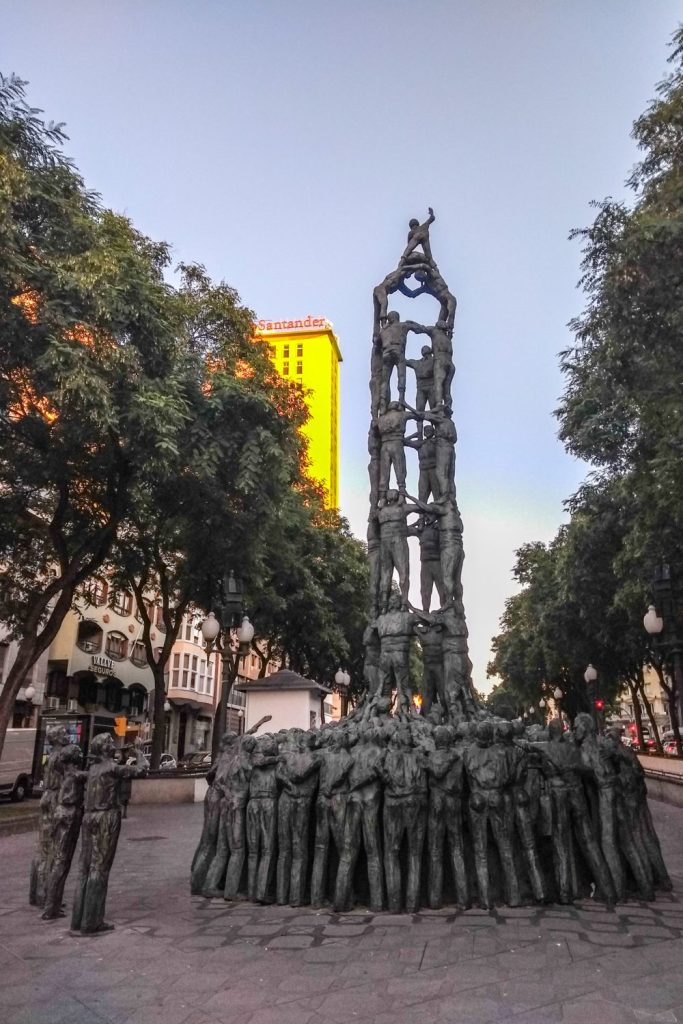
The forming of the Castells (Human Towers) is believed to have started early in the 18th century in or around Tarragona and it has since spread throughout Catalonia. Indeed, an annual competition is now held in Tarragona every summer with teams known as ‘colles’ descending on the city from all over Catalonia to compete in building the tallest and most complex towers made only of human beings of all ages and sizes standing on top of each other. As many as 500 people have been known to form a colle and it is not unusual for the towers to reach ten tiers. The concept has attracted so much interest that UNESCO has declared the Castells a “Masterpiece of the Oral and Intangible Heritage of Humanity”.
As was mentioned beforehand, this was a brief stop in Tarragona. There is a great deal more to see in the city (principal among them being the Roman Forum and the magnificent 12th century Cathedral of Santa Maria) but we had to move on – our dogs were due to see a vet in Cambril.
As we moved along the A9 in France towards Spain it started to rain (albeit lightly) and the cloud cover over the Pyrenees increased but, no problem, almost as soon as we crossed the border the skies began to brighten. It wasn’t yet sunny but it bode well.

By the time we reached L’Estartit on the Catalan coast we had completed almost 1,000 miles in the Van since leaving Brighton and we were beginning to feel very good about the weather. All of the forecasts that we checked promised sunshine for the next week (especially if we were to continue south).
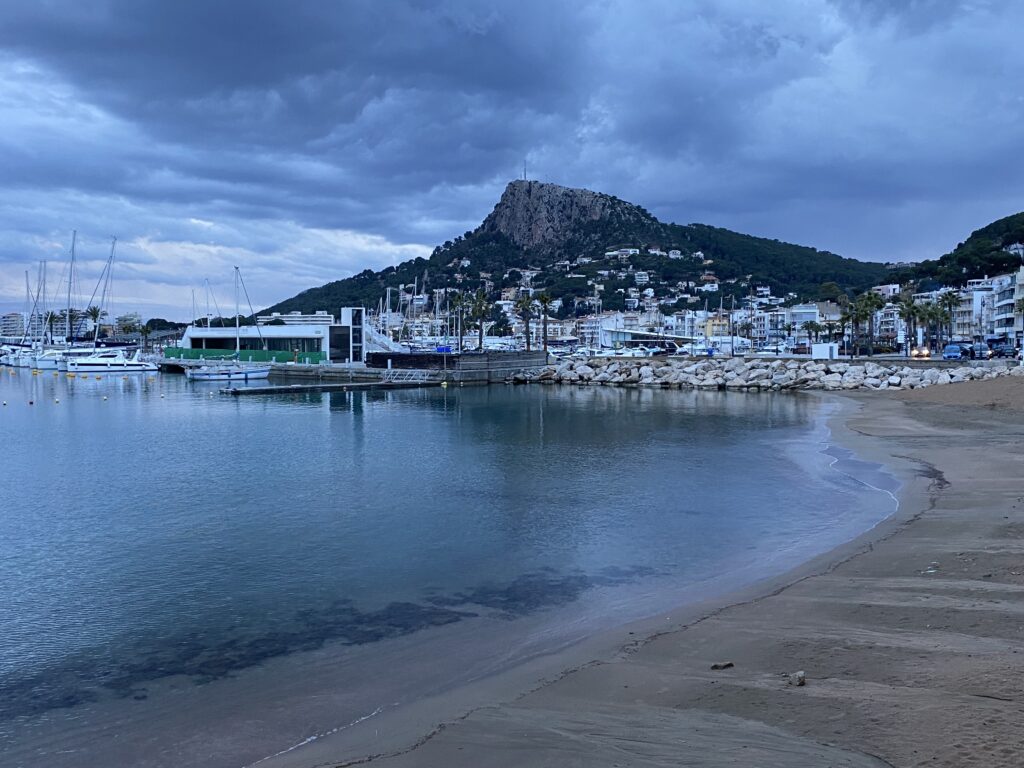
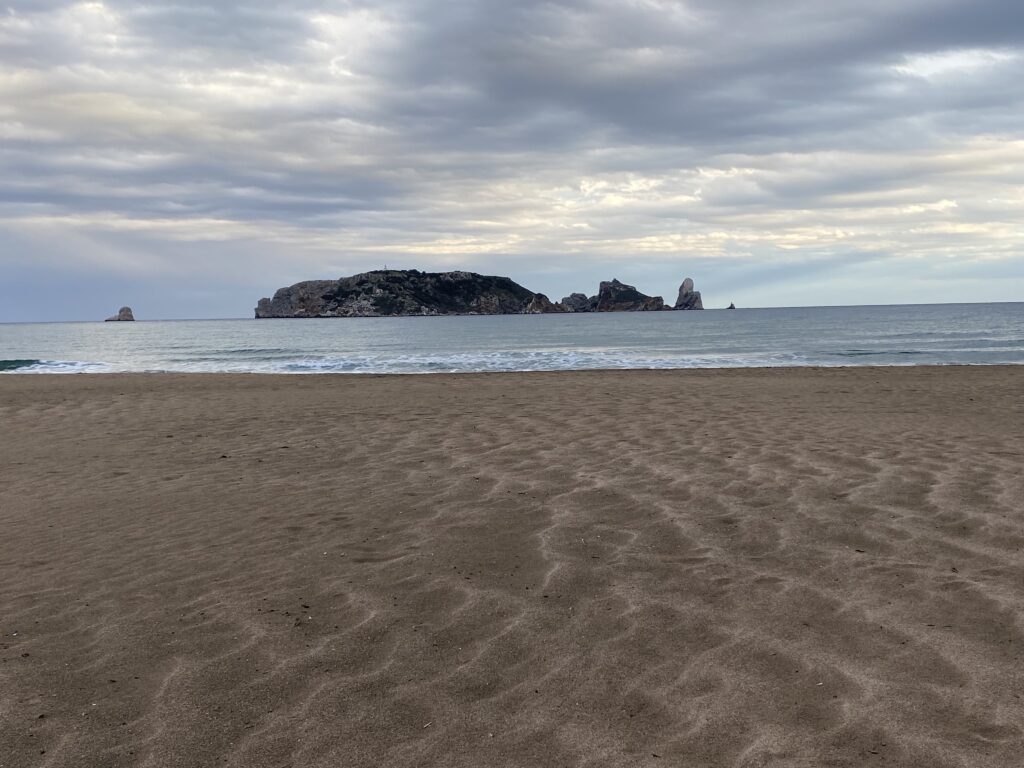
L’Estartit, like so many places on the Catalan coast, is a holiday resort primarily for the Spanish. There’s not so much of the lurid, ‘kiss me quick’ trash that is to be found on the Costas further south in Spain but neither is there much left of the old picturesque fishing ports that used to dot this coast. Fishing and the associated cottage industries have given way almost entirely to tourism and, in winter, the small towns and villages on this coast are now almost empty; with many of the hotels closed and countless villas and apartments (now second homes and holiday lets) all boarded up.
L’Estartit is no different to the other places. I walked almost the whole of the town during the late afternoon and early evening to find that most houses and apartments are locked and shuttered and not a single restaurant was open (or likely to open). I found just two cafe/bars and a kebab takeaway open and none of those three places were particularly inviting. A local I spoke to confirmed that only one or two restaurants in the town ever opens in winter and that is usually at weekends.
For all that, I did enjoy my walk around the town. L’Estartit has some nice cliffs to the north of the town, an interesting island protecting the harbour, a very nice beach front and a smart fair sized marina (especially given the size of the town). I suspect that a significant number of L’Estartit’s summer hordes arrive by boat.
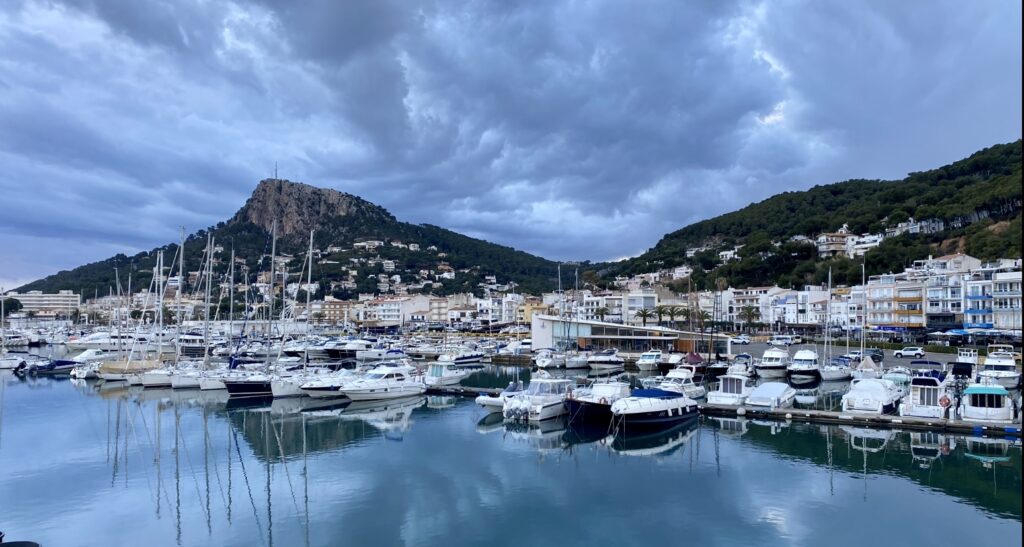
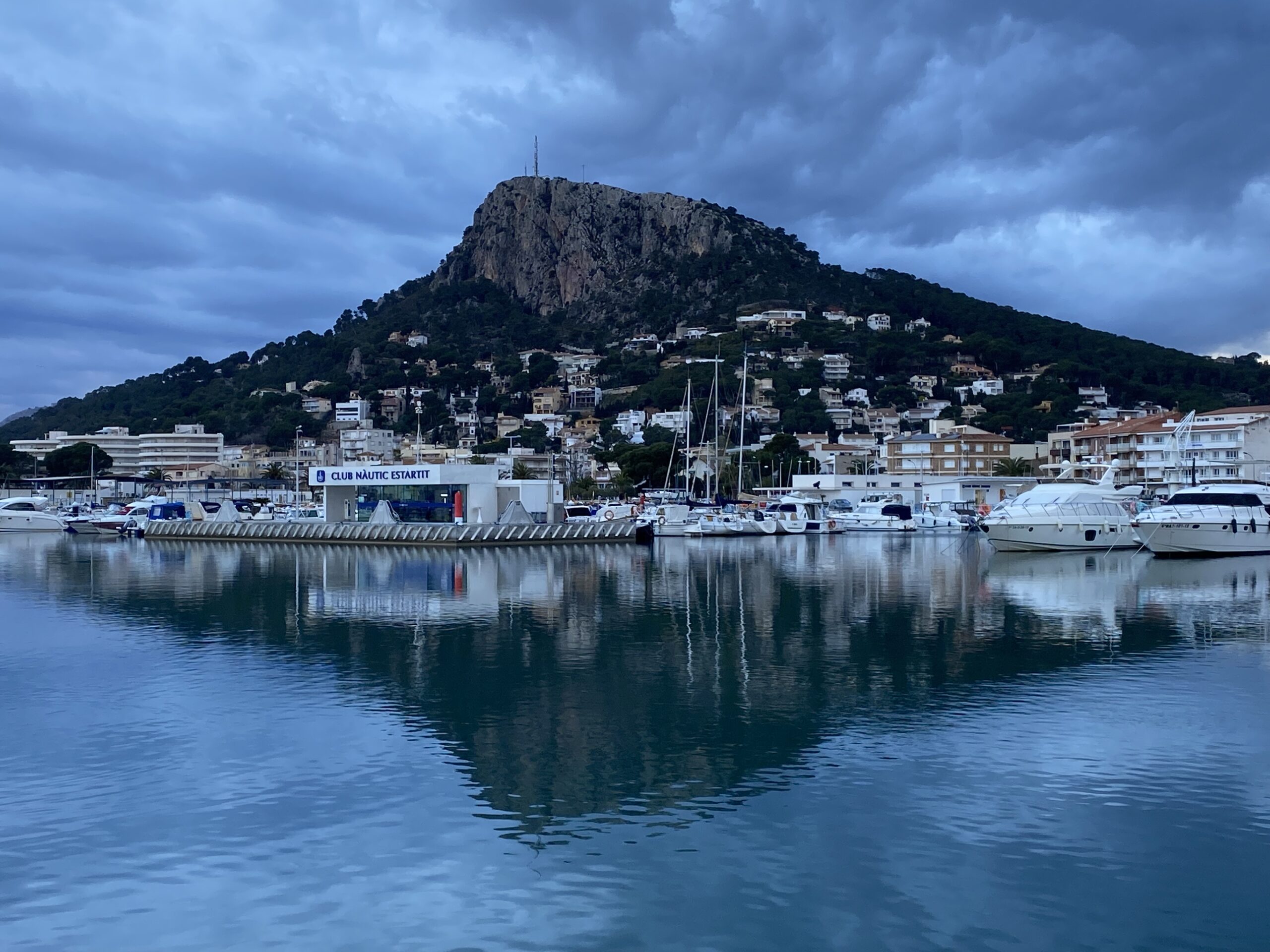
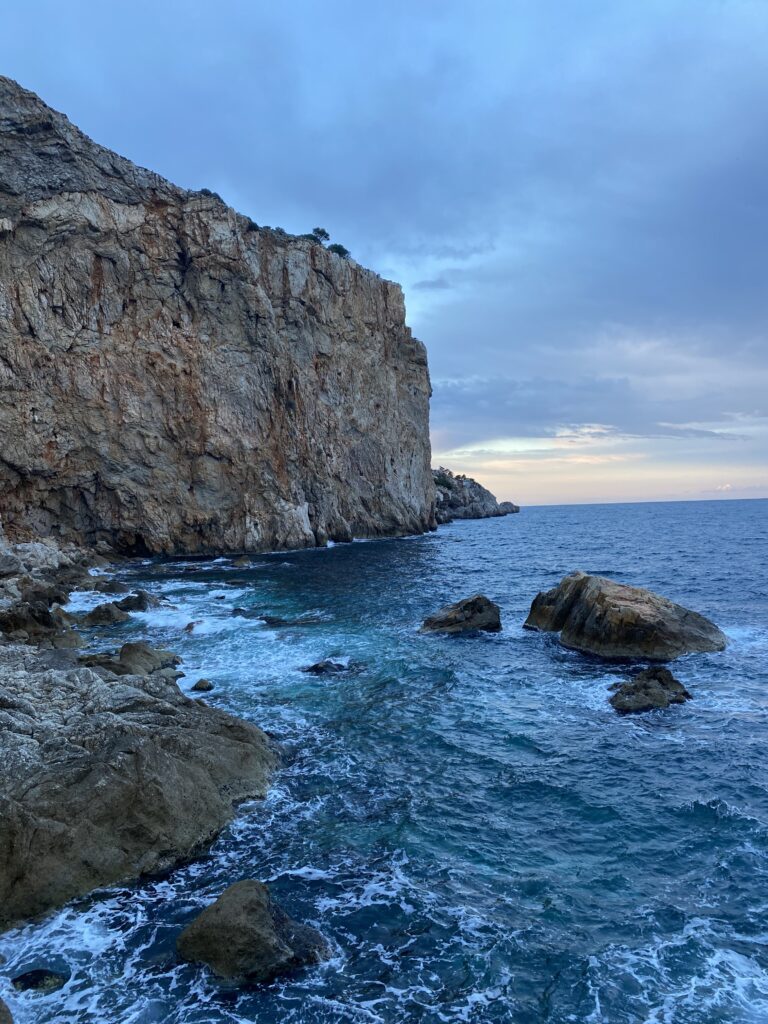
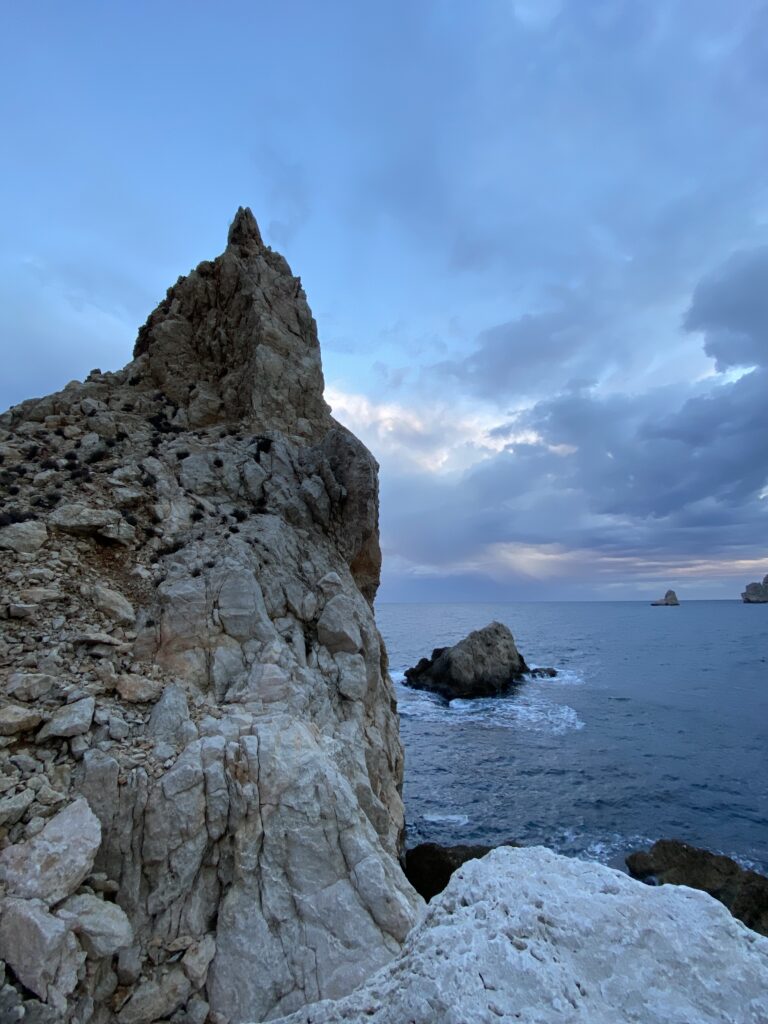
This will be a short entry.
We had a great evening in Chateauroux but left early the next morning without spending any real time exploring the town. Such a waste but it is not getting any warmer and really bad weather is expected tomorrow. We are determined to continue south so as to find warm, sunny weather as quickly as possible.
The day’s drive from Chateauroux took us all the way to Deyme, just south of Toulouse. We are poised to enter Spain tomorrow where we should finally find some sun.
Deyme really isn’t worth visiting. Sorry but, for a surprisingly large village of more than 1,000 people, there’s absolutely nothing to the place. I couldn’t even find a baker’s shop, which is virtually unheard of in France. I suspect that until not so long ago this was a simple hamlet which, as Toulouse has grown, has seen a significant influx of commuters and/but little or no change to the local infrastructure.
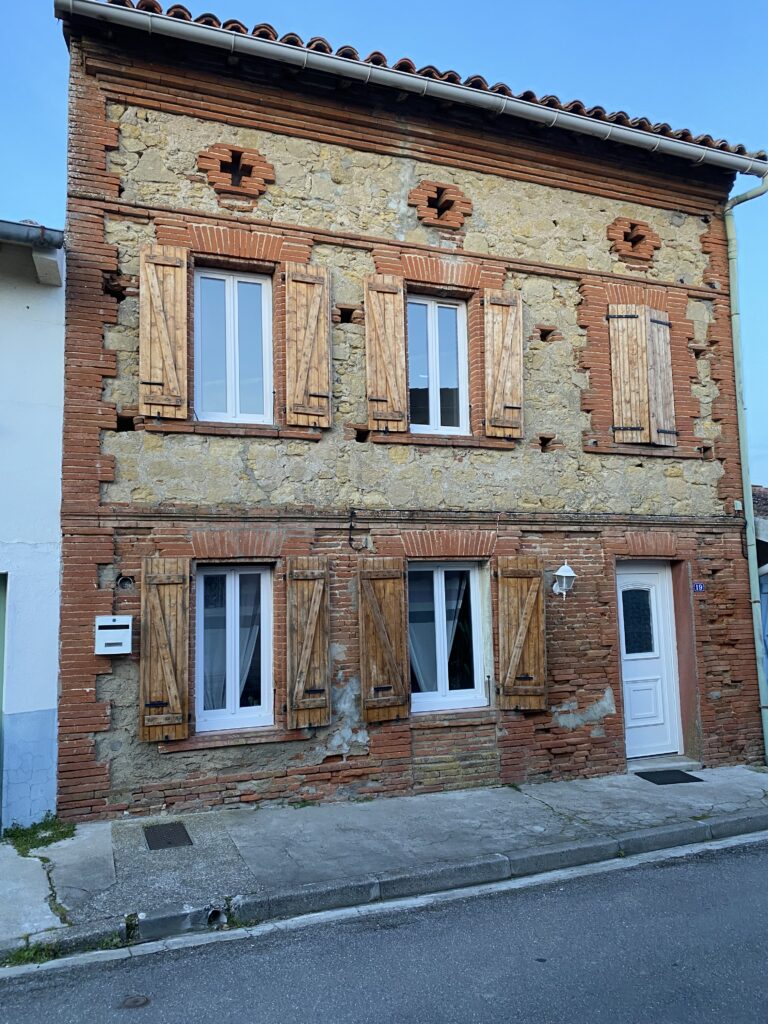

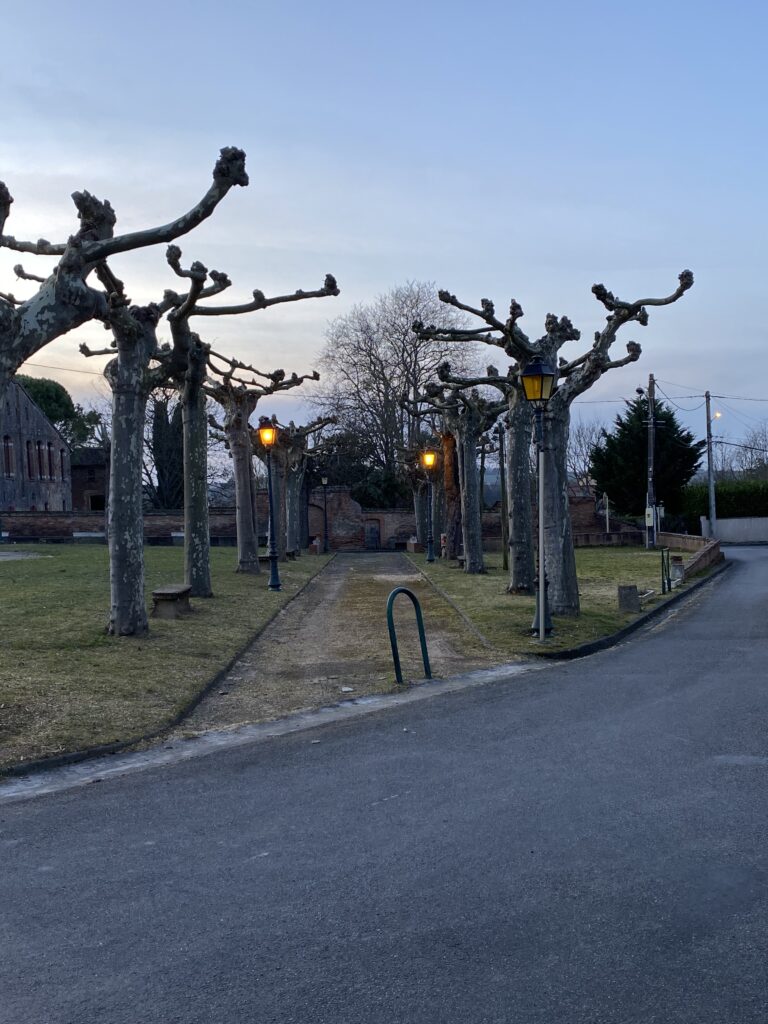
That’s all there is to say about the place. Sorry Deyme.
The next day, Saturday, saw us leave Bouafles very early (by our standards) and head due south towards Chateauroux. It was bitterly cold outside the Van and any lingering doubts about staying on in Bouafles were soon dispelled.
Two hundred miles (and some three supermarkets) later we checked into Camping La Rochat which sits by the Belle Isle Lake at the edge of Chateauroux. The 8 acre lake is wrapped in 12 acres of parkland and the dogs loved it, running around madly in the long frost covered white grass. Yes, Chateauroux was as cold as Bouafles.
Leaving Vanya to warm up and rest in the Van I set off to check out the town and find a decent restaurant for the evening. I failed miserably on both counts. The L’Ecrin des Saveurs had been identified to us as the best restaurant in town and it both looked the part and had a very appealing menu but was fully booked. I carried on down the Avenue Marcel Lemoine towards the town centre checking out other restaurants on the way and disaster struck. Le Queen’s Berry was open!!

Le Queen’s Berry proved to be a very fine and very welcoming sports bar and brasserie serving excellent (room temperature) draft Guiness and, if that wasn’t enough, the 6 Nations rugby union match between France and Ireland was about to begin. The locals prevailed upon me to stay and watch the match, finding me an excellent spot at the bar next to the Guiness tap. I subsequently failed in my duty to find a restaurant.


Later that evening Vanya and I set off with the dogs to find a decent restaurant. She wasn’t overly impressed with my fall back position which was a Vietnamese Restaurant I passed on my way back from the match but, joy of joys, we found a perfect little bar in some back street near the town centre which served a fine charcuterie board and some excellent wines.
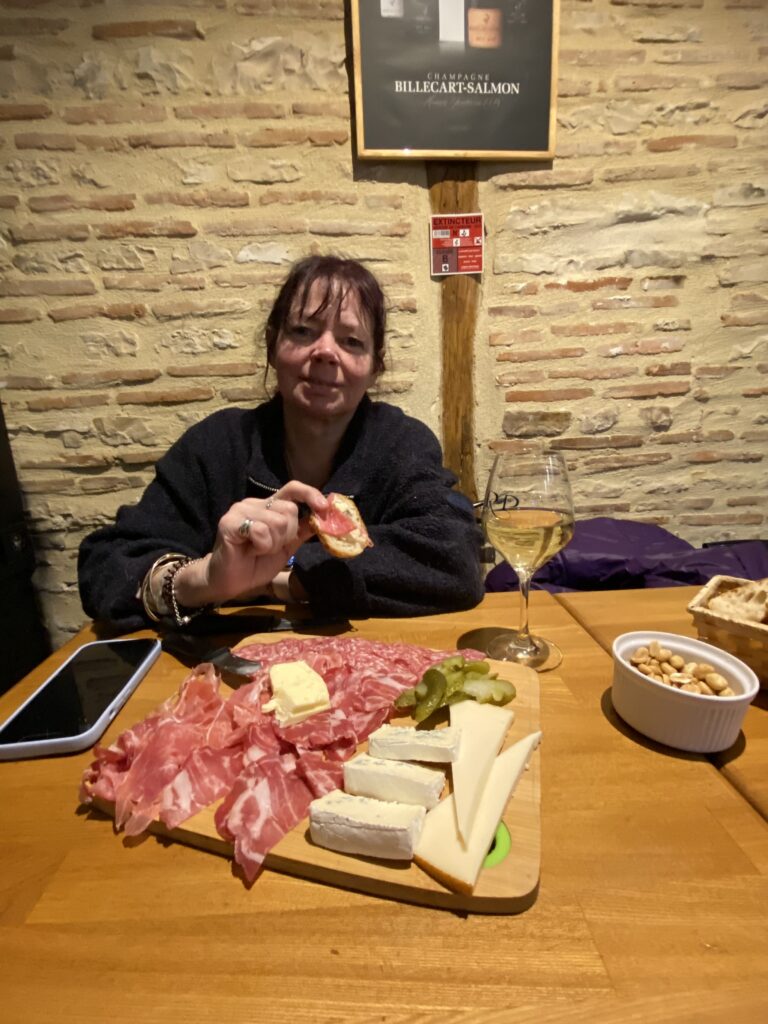

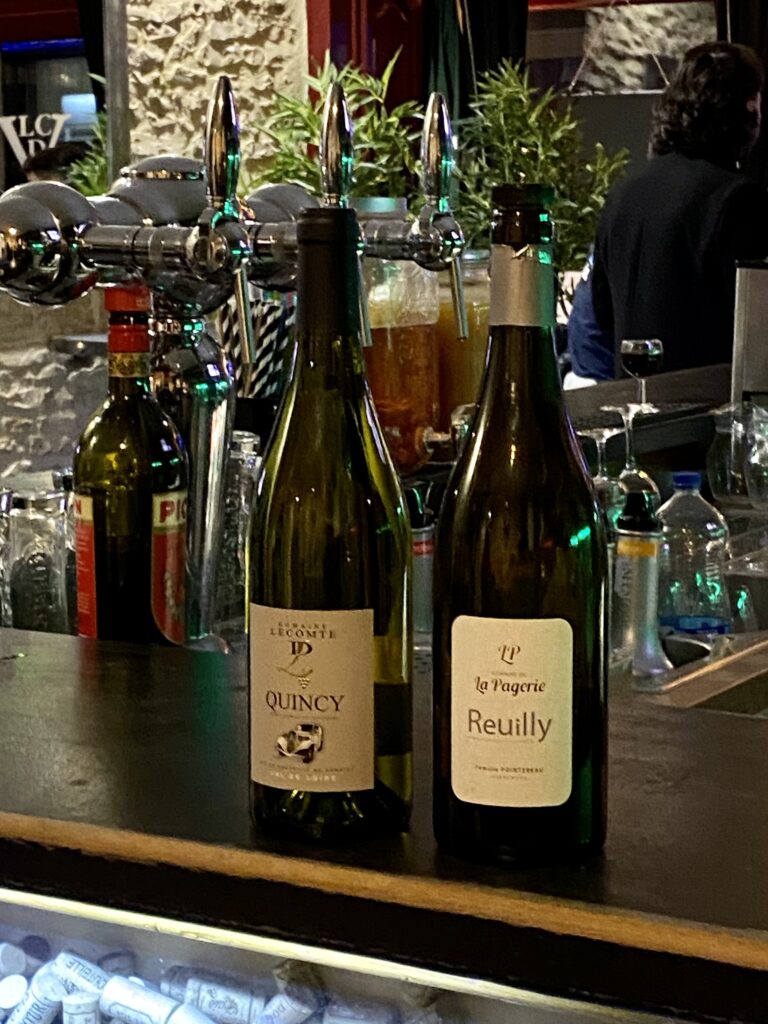
We didn’t get to see much of Chateauroux but we had a fine evening and there’s always another time.
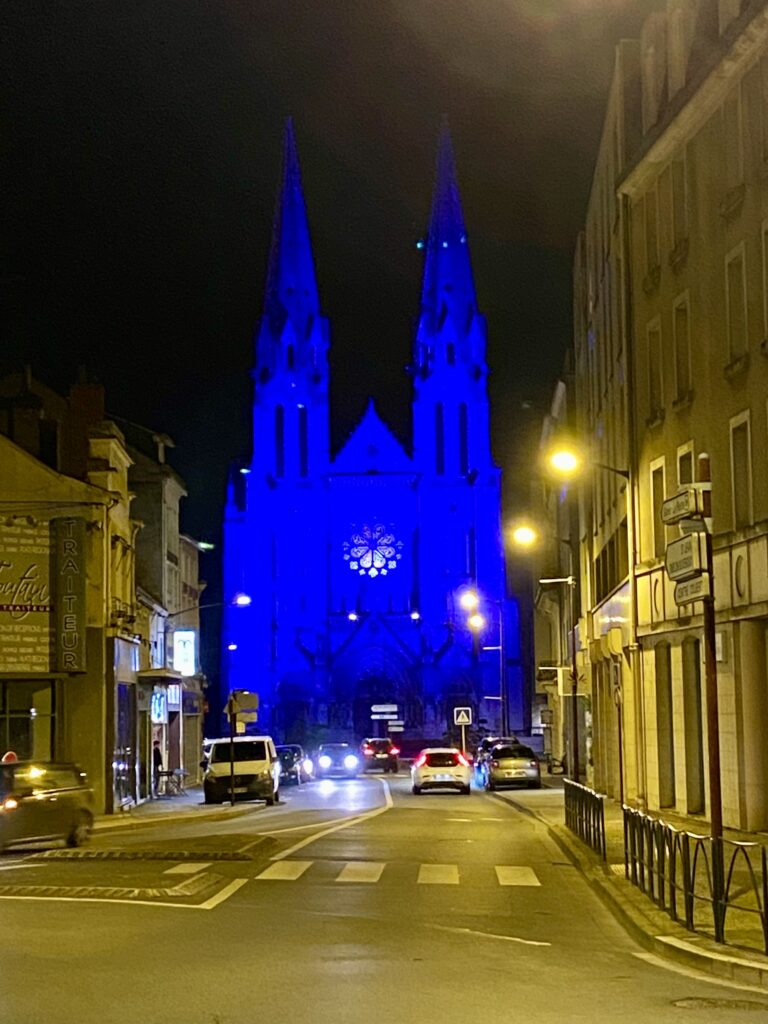

Oh! I forgot to mention that Chateauroux is the birthplace of both Napoleon’s aide-de-campe and friend General Henri Bertrand and, wholly unrelated, the actor Gerard Depardieu. There you go.
And so begins a short impromptu trip (Tour 5?) down through France to Spain.
Life has been all too restrictive in England during the winter months under Covid and with France and Spain now relaxing their Covid rules and opening their borders to the Brits (provided one is fully vaccinated and has a Covid Passport), we decided to drive down to Spain. Currently, the weather in the south of Spain is fine with plenty of sunshine and temperatures in the low to mid 20’s. If it holds, that’ll suit us. Such a trip also provides Vanya with the opportunity to practise some Spanish.
I’ll not bore you with full details of the last minute organisation necessary for us to travel but; we had to collect the Van from North Wales; load it; secure Covid clearances sufficient to satisfy both the British and French authorities; obtain permits to take our dogs overseas and; find places on a cross channel ferry from Dover to Calais because the Eurotunnel trains were already sold out. It was worth it. During the afternoon of Friday 11 February we arrived in Calais, raring to go.
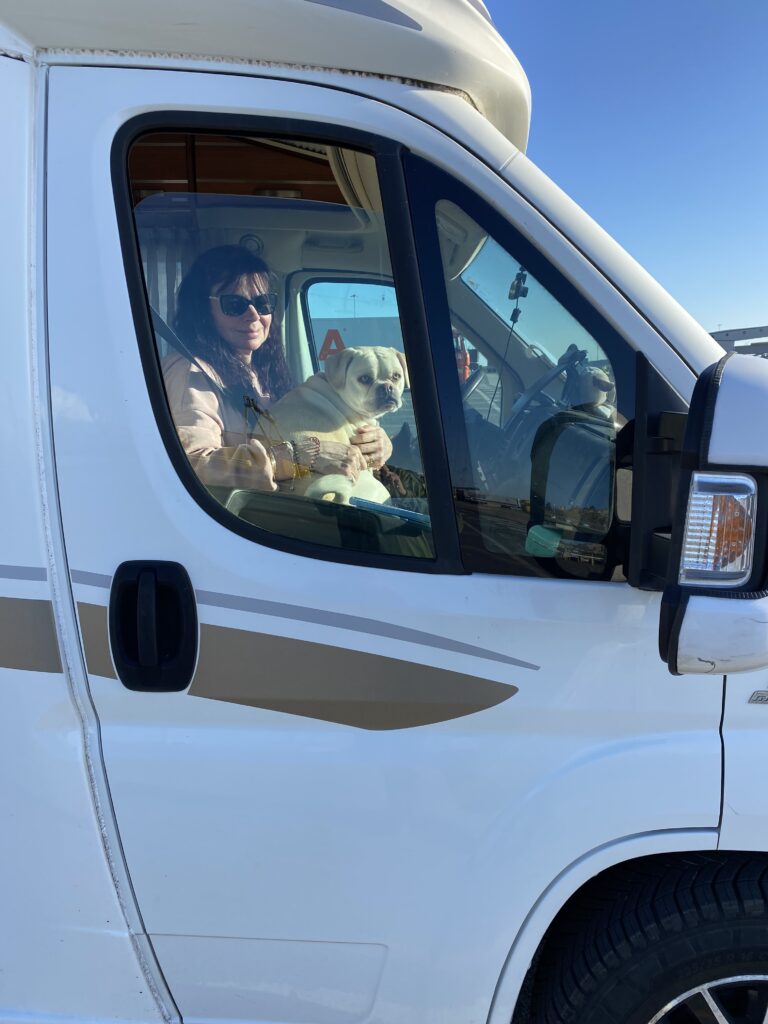


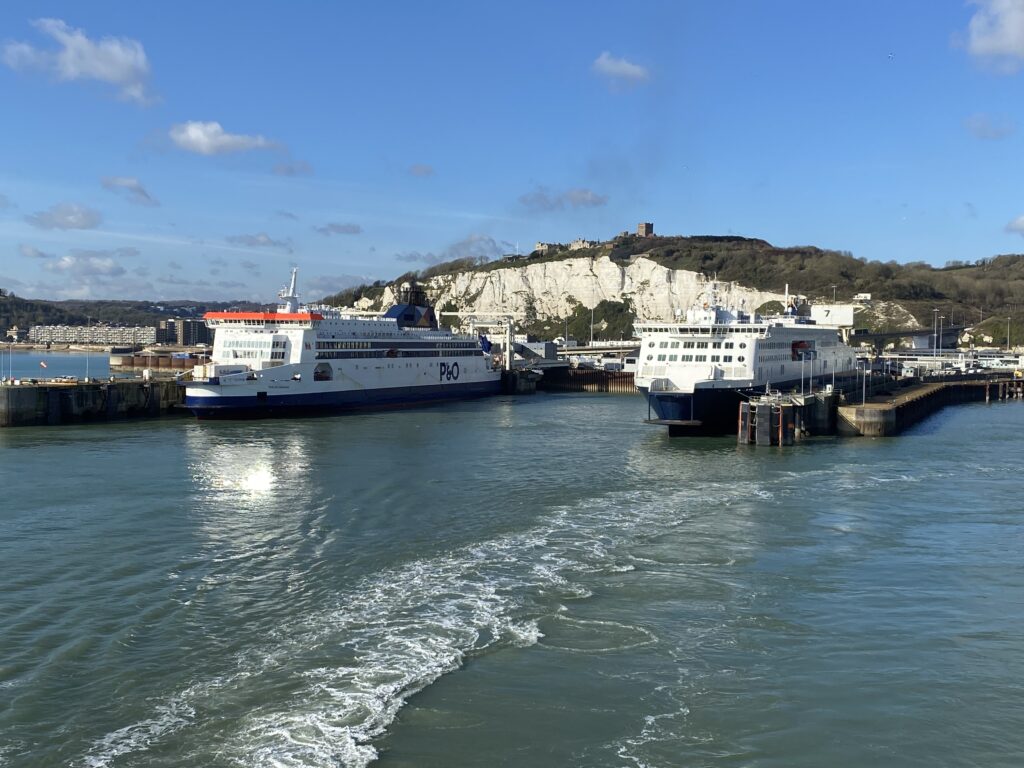
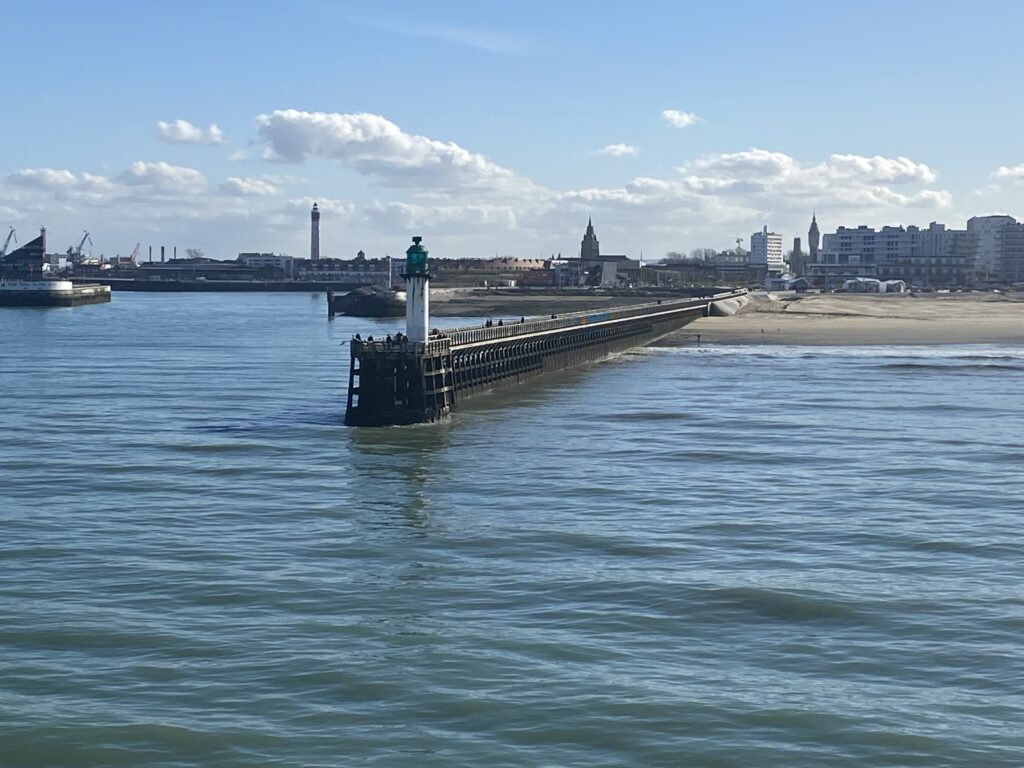
It was cold as we arrived in France (seriously cold) and the weather forecast suggests it will get colder still (well below freezing). This prompted a change of plan. We decided to make haste towards Spain where the weather forecast is said to be considerably more settled.
Immediately after docking at Calais we drove in a south westerly direction some 150 miles towards our first camping site, Camping Chateau de Bouafles, just outside the small town of Les Andelys in the Eure Department of Normandy.
Ordinarily we would have stayed at Bouafles for at least a couple of days. Les Andelys was originally a fishing village on the Seine, dominated by the 12th century castle of Chateau Gaillard. The castle is a bit of a ruin nowadays but it is steeped in history and offers tremendous views over the River Seine and the surrounding countryside. The castle alone would have kept me occupied for a while but add to this the Collegiate Church and; the charming old town with it’s narrow paths and alleys and half timbered houses and; Sir Arthur Conan Doyle’s association with the town (he and his family lived here for some time with the castle & town inspiring a number of his books & novels) and; don’t forget the Saturday morning market and; well, Les Andalys is worth at least two days of anyone’s time.

Having written all that, the morning temperature of minus three degrees centigrade and the promise of impending rain/snow brought me back to my senses and into the Van’s driving seat. Perhaps the weather will be better in Les Andelys as we return to the UK?